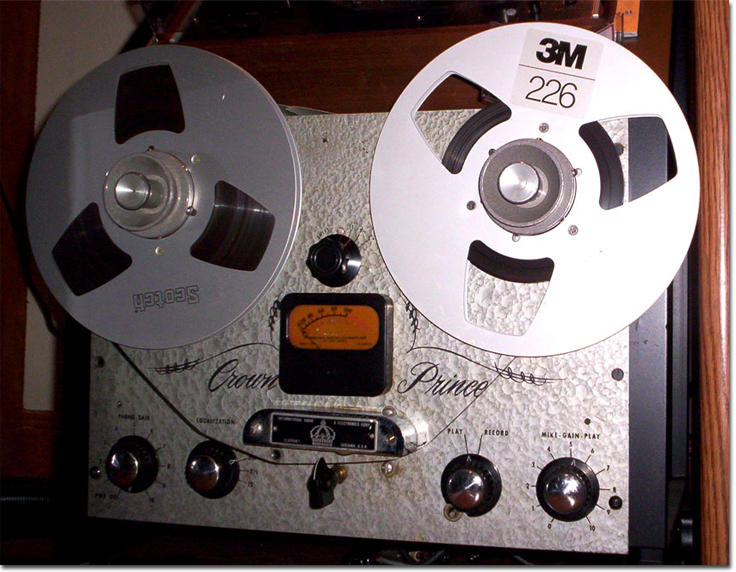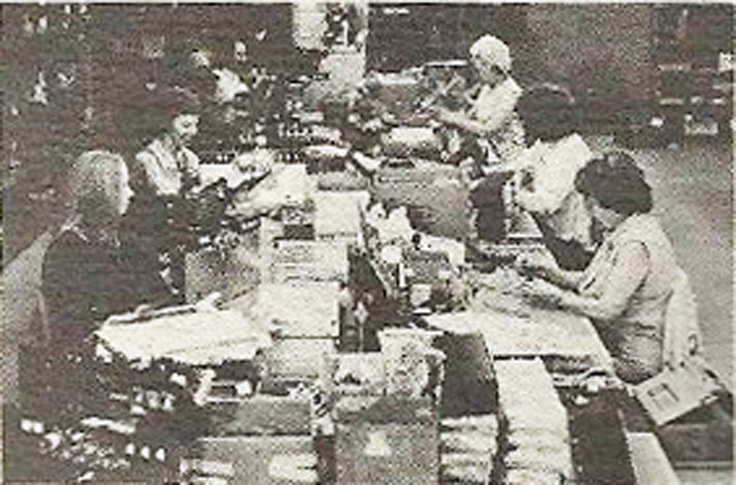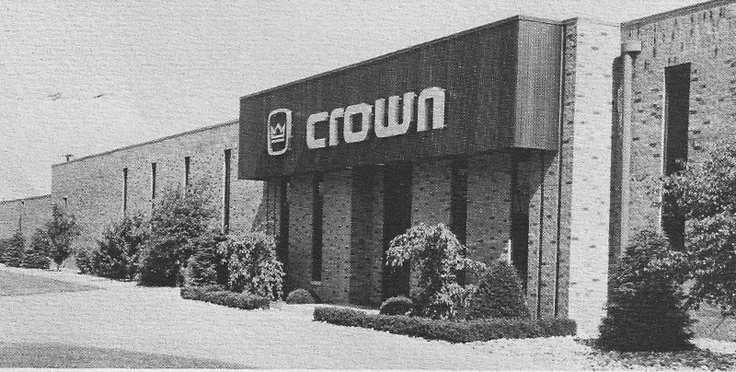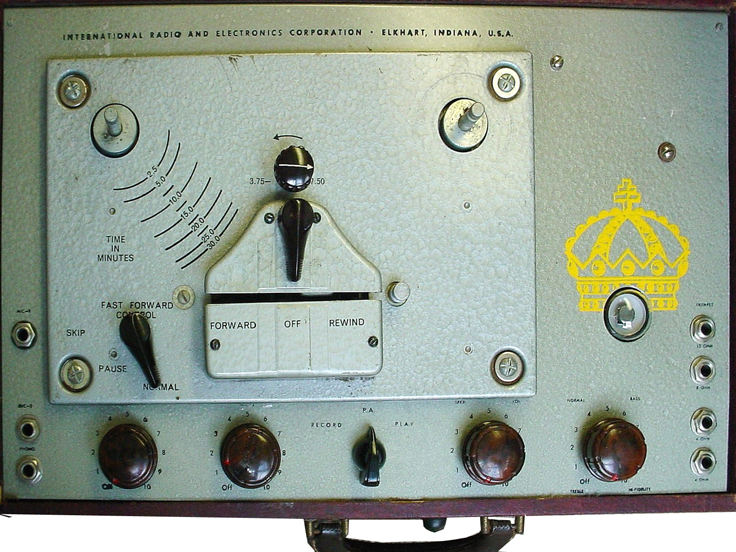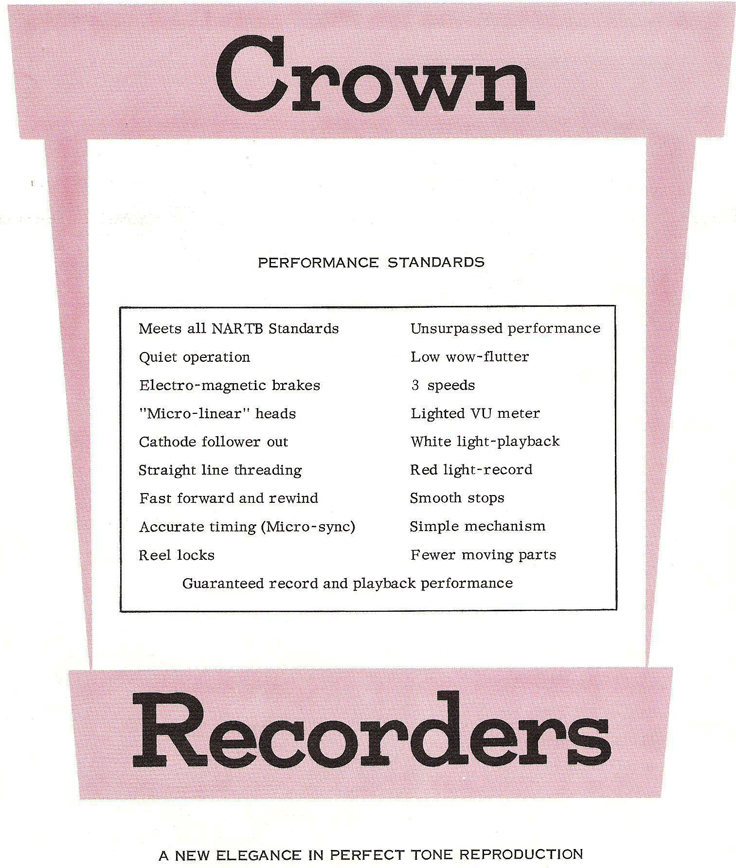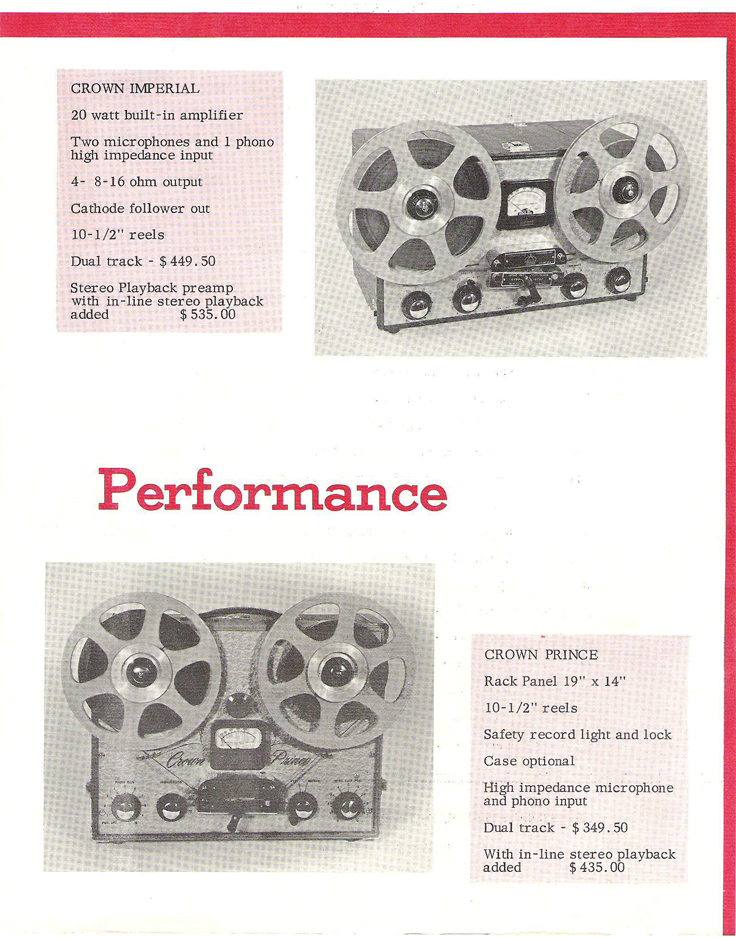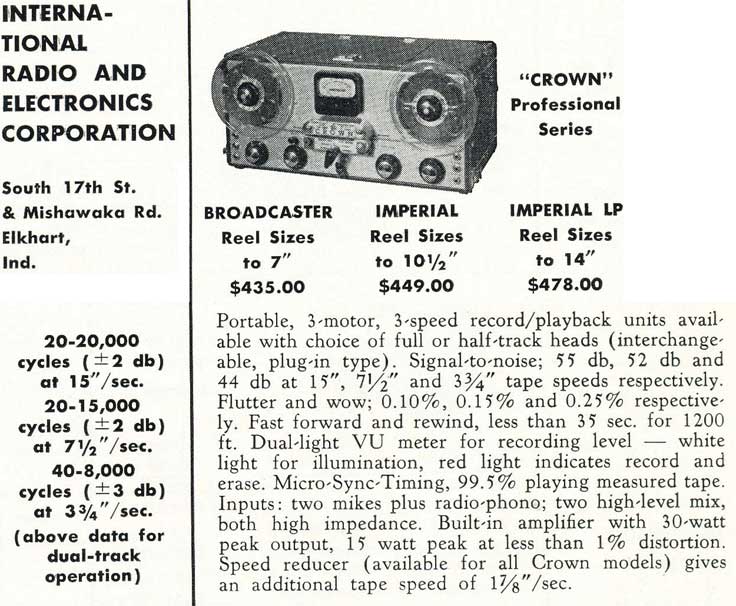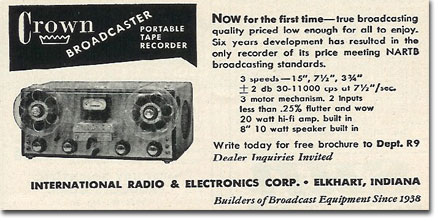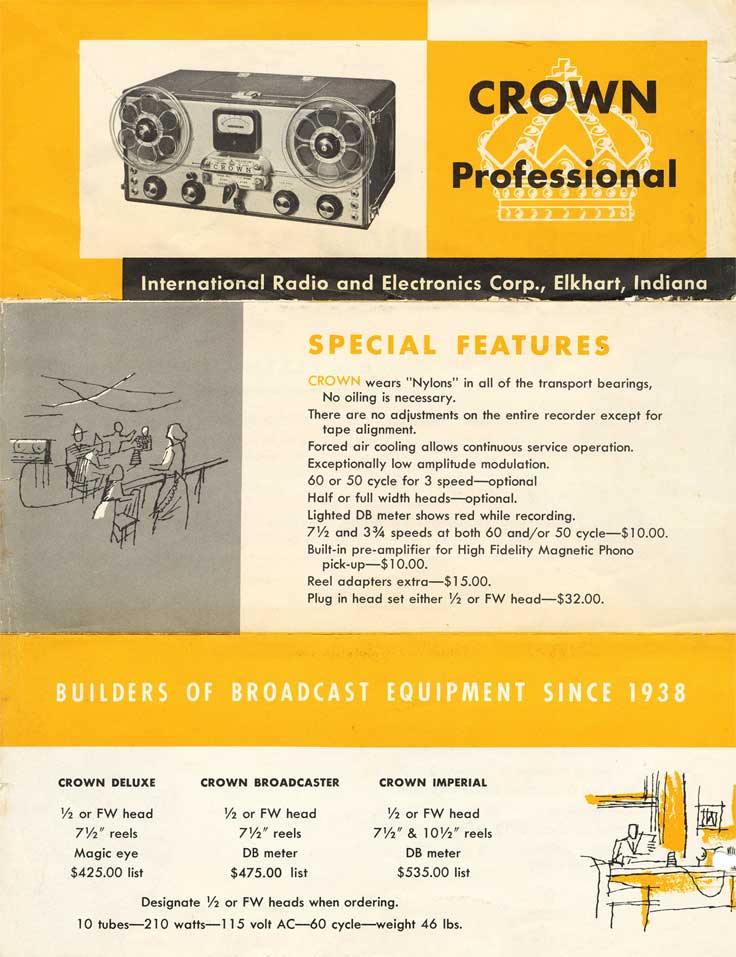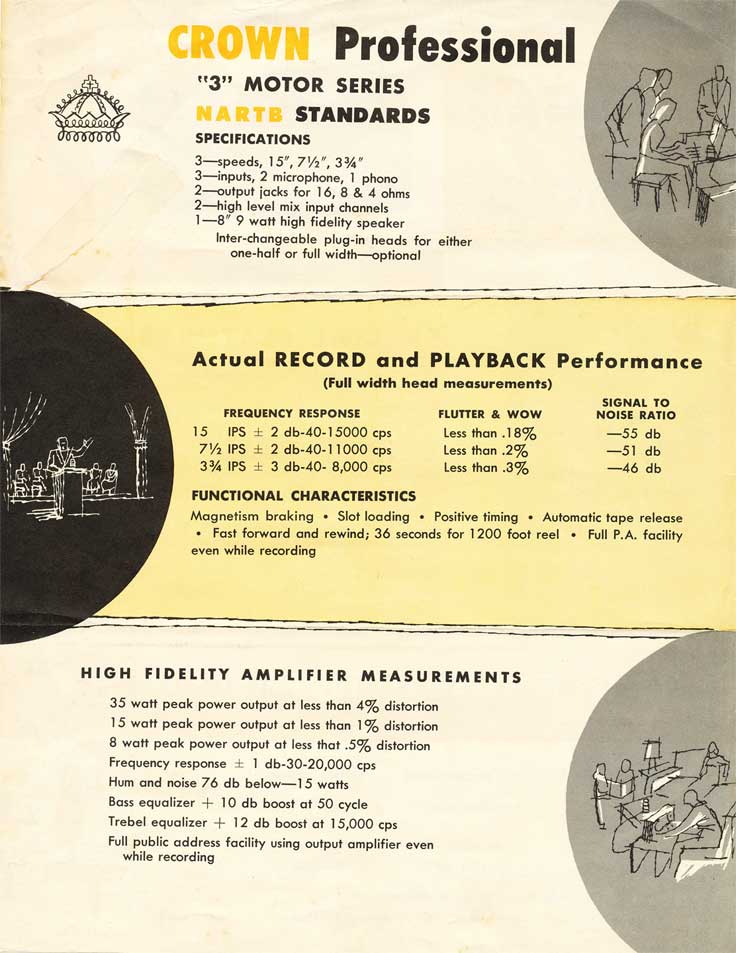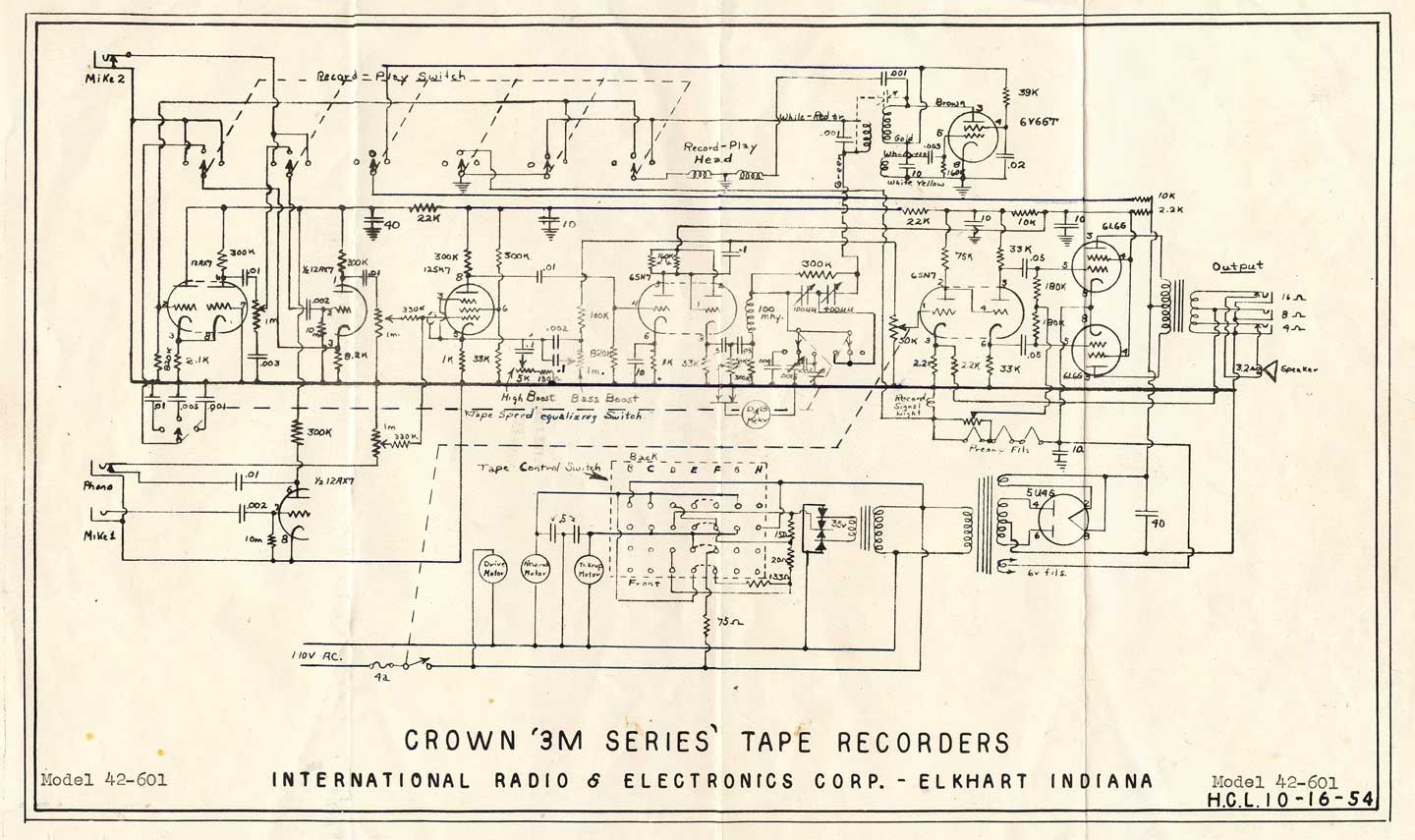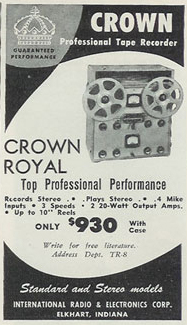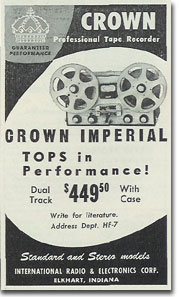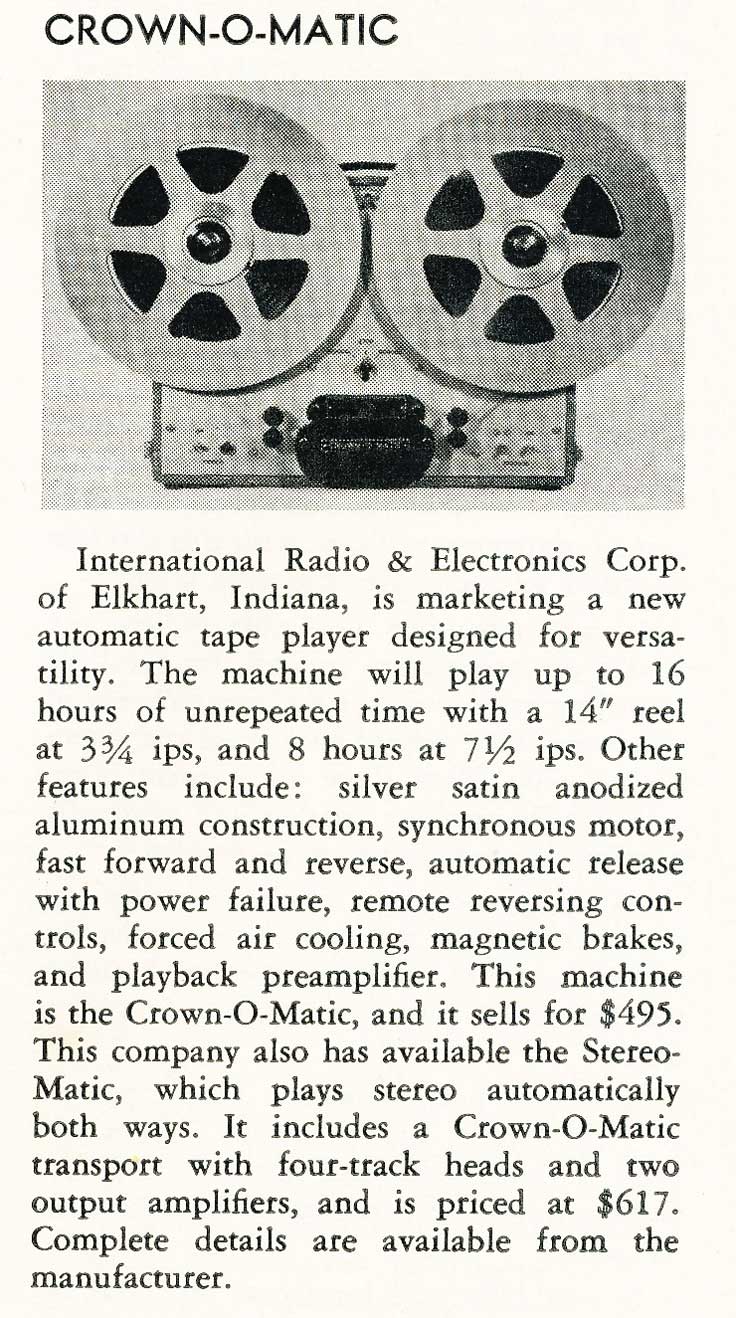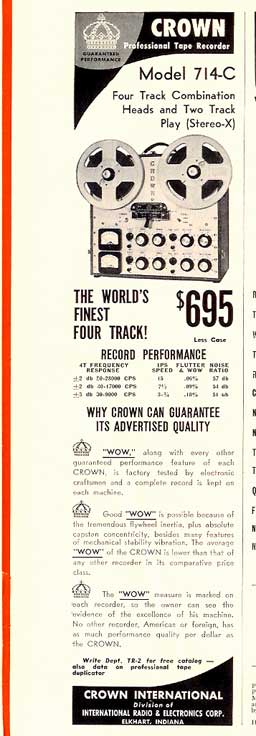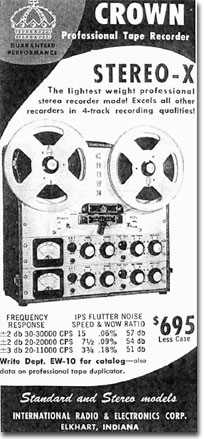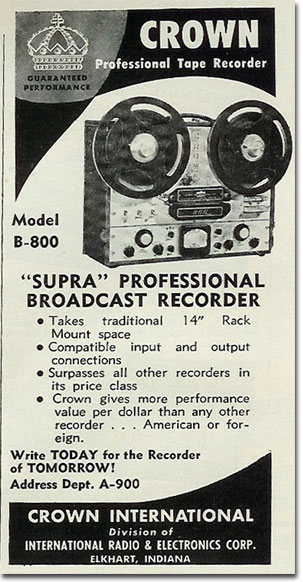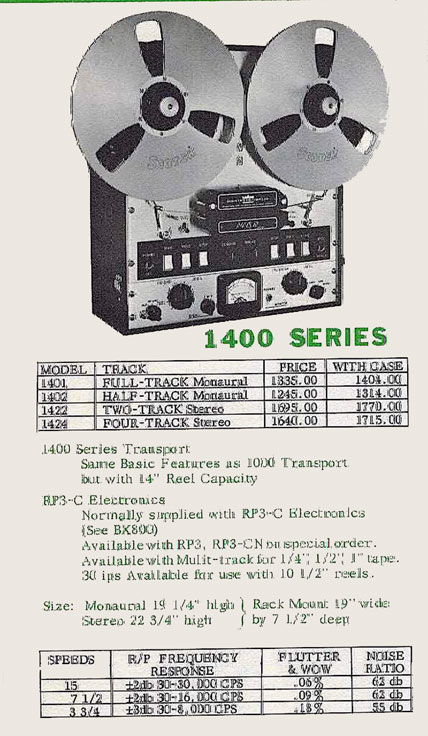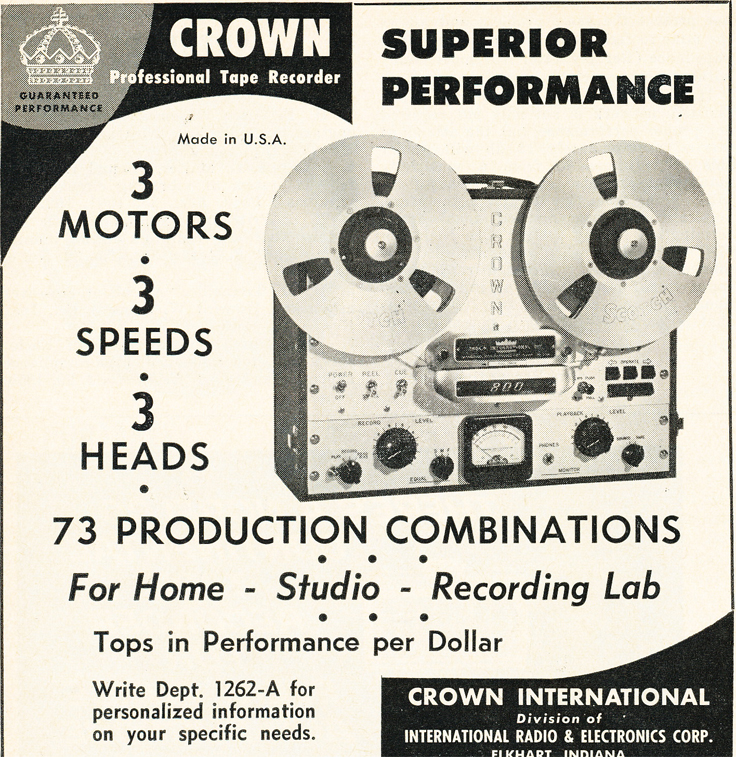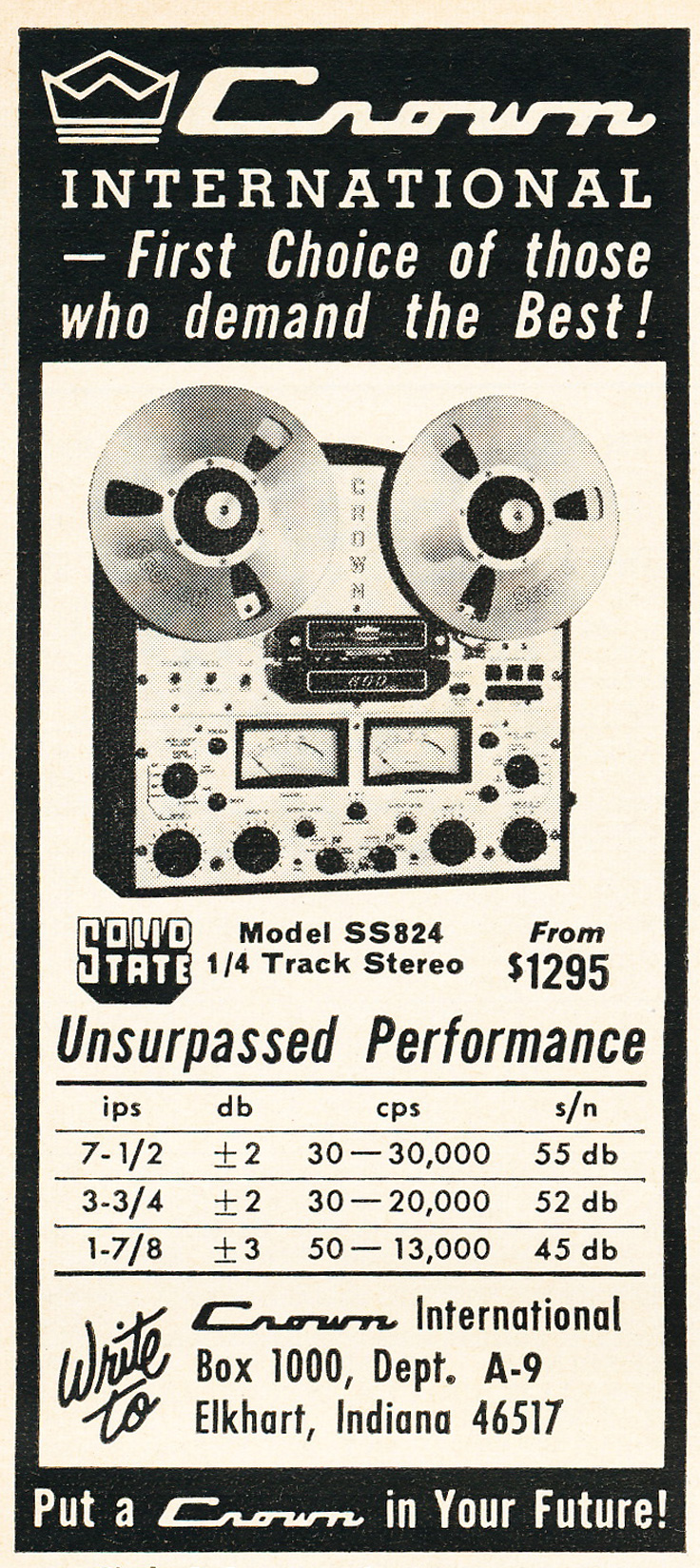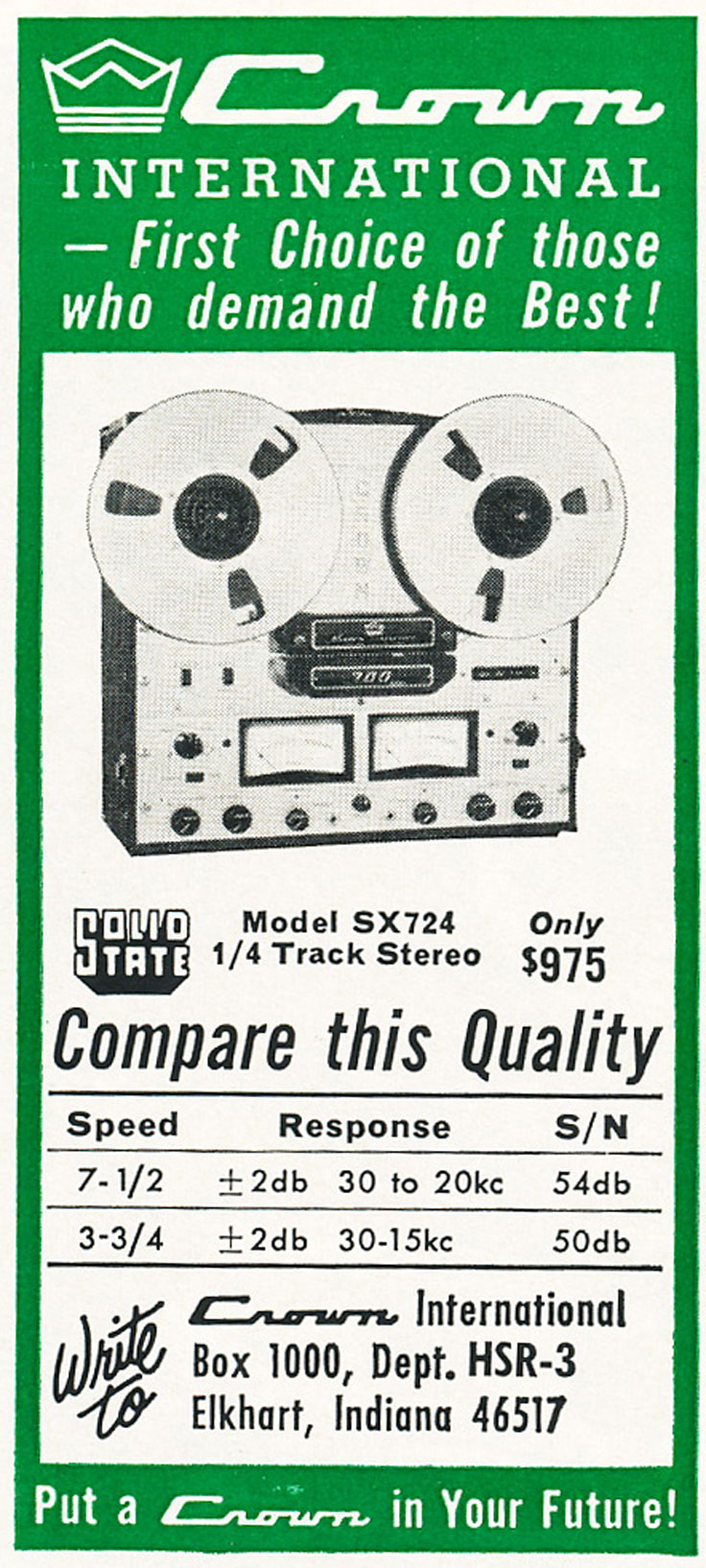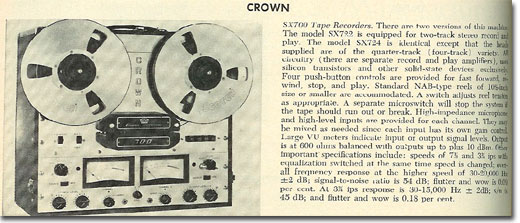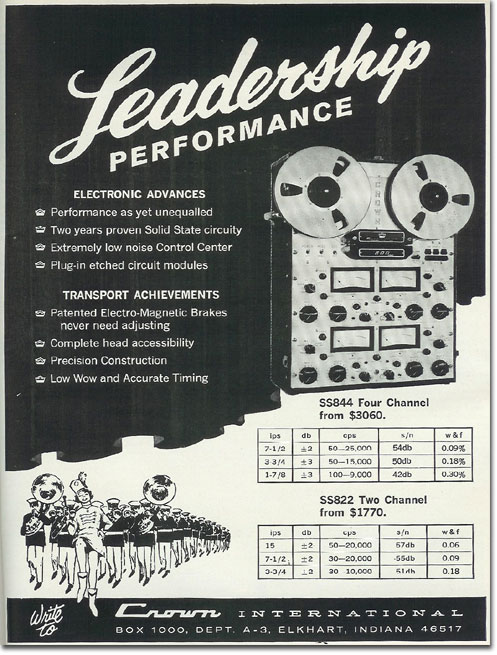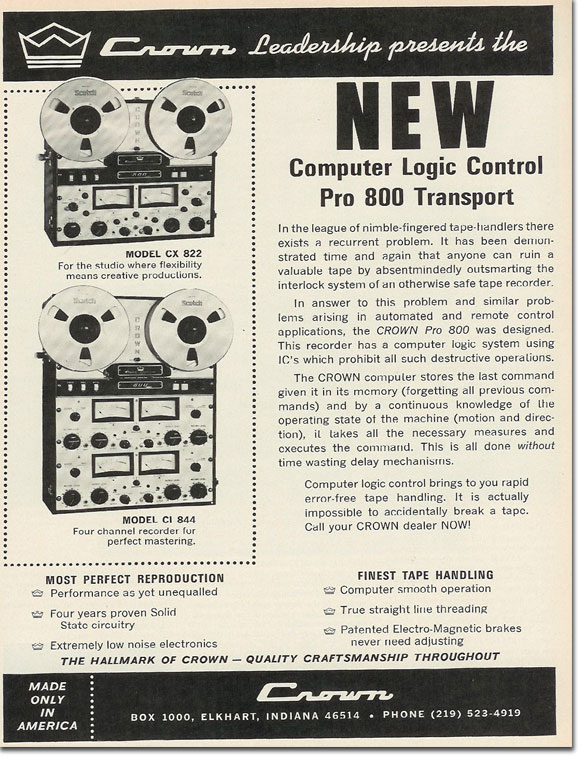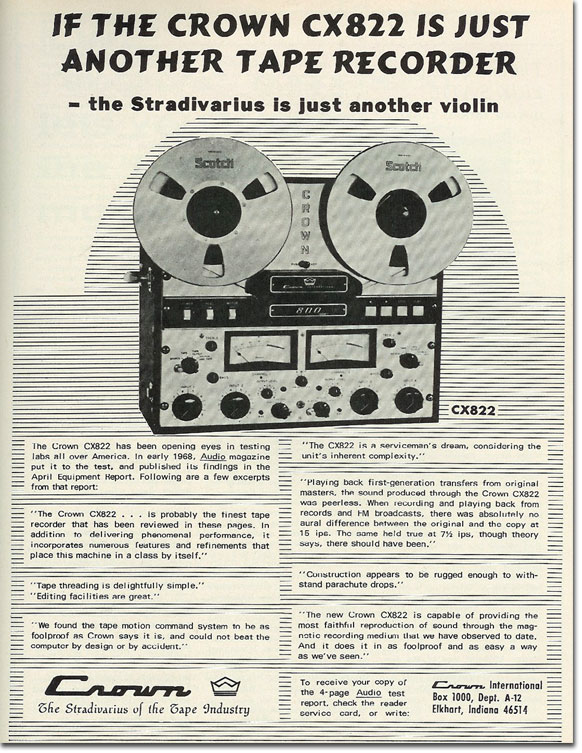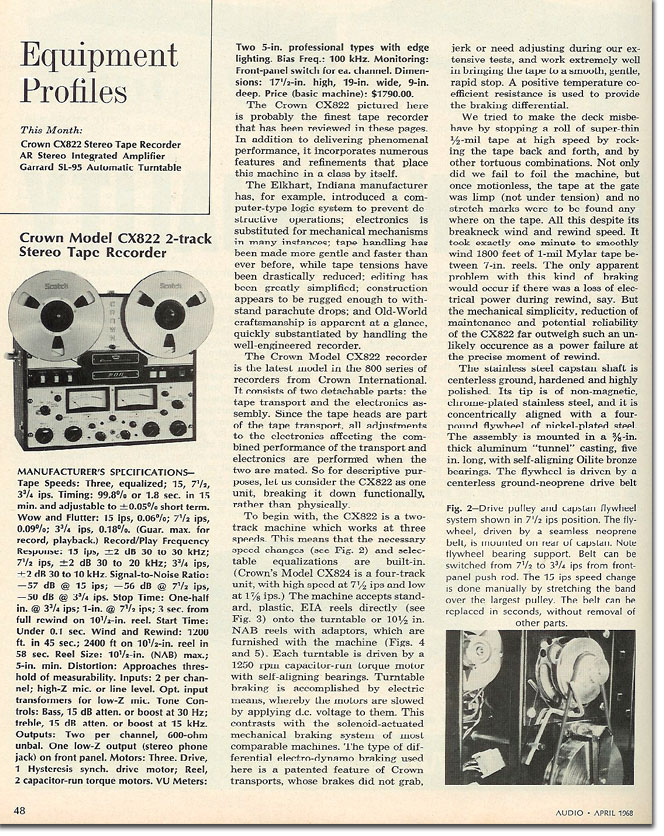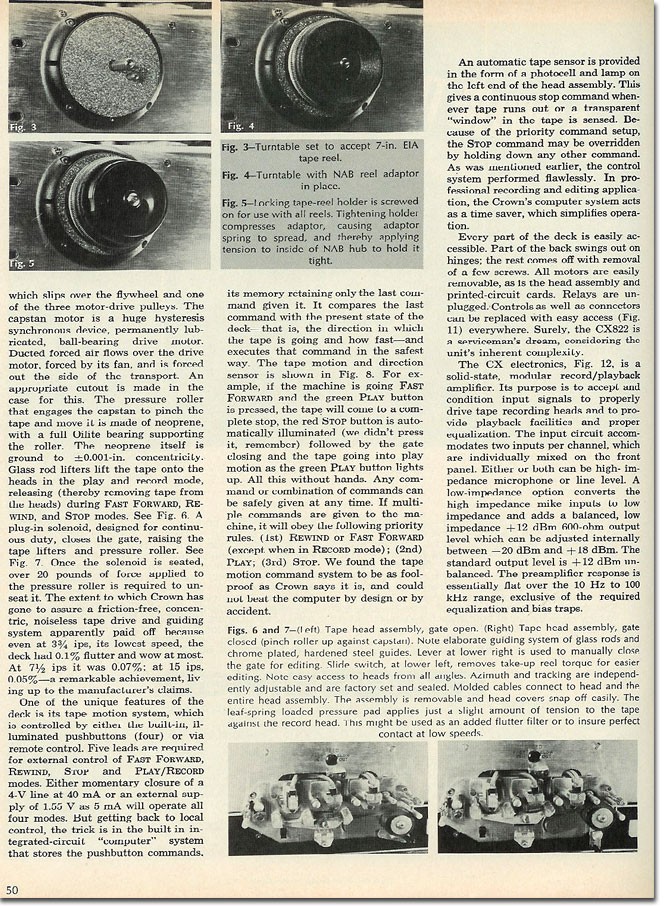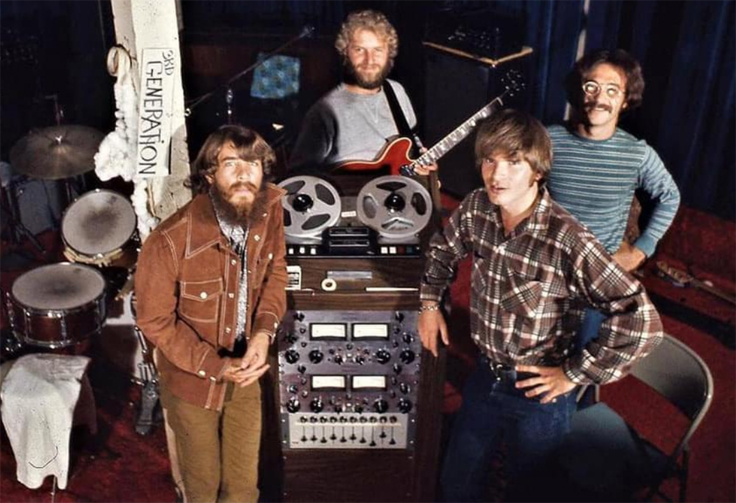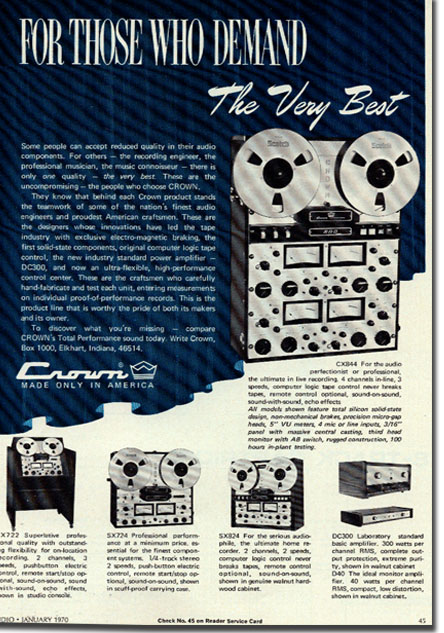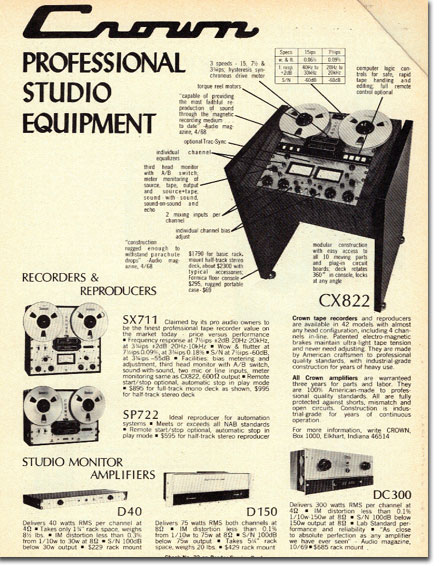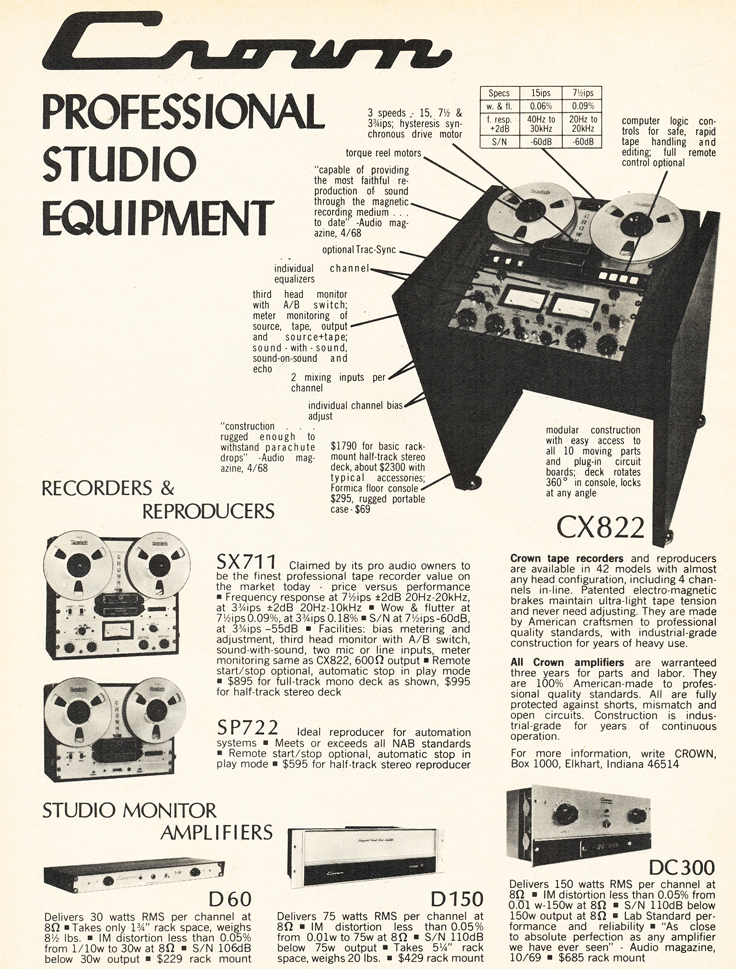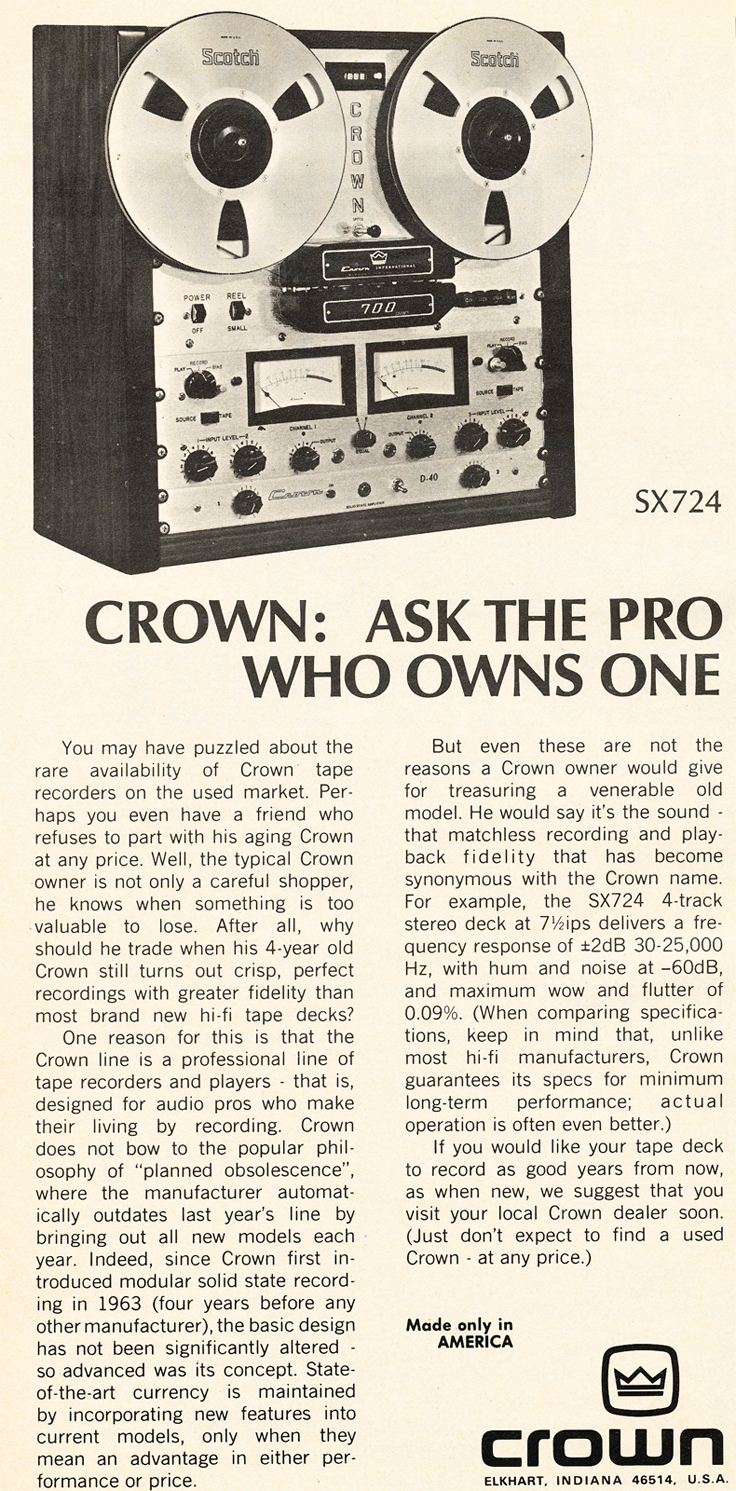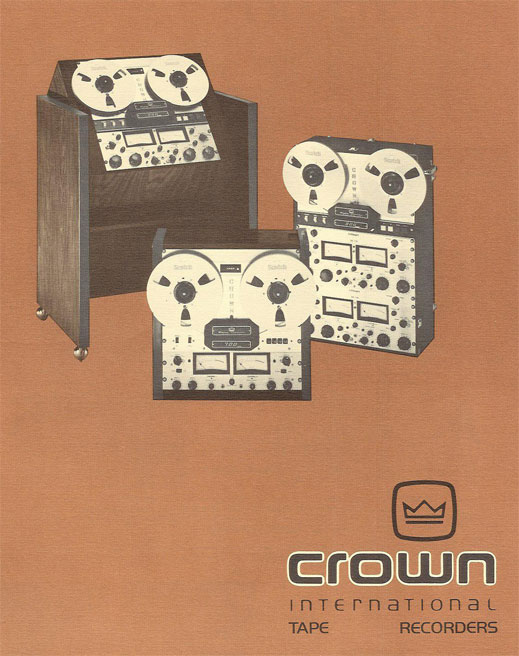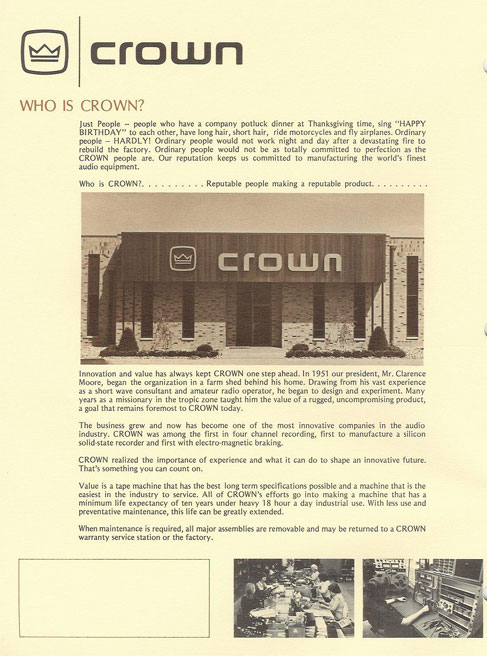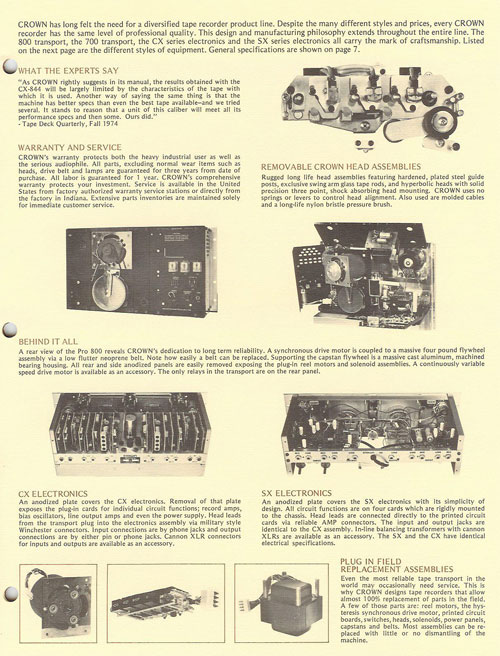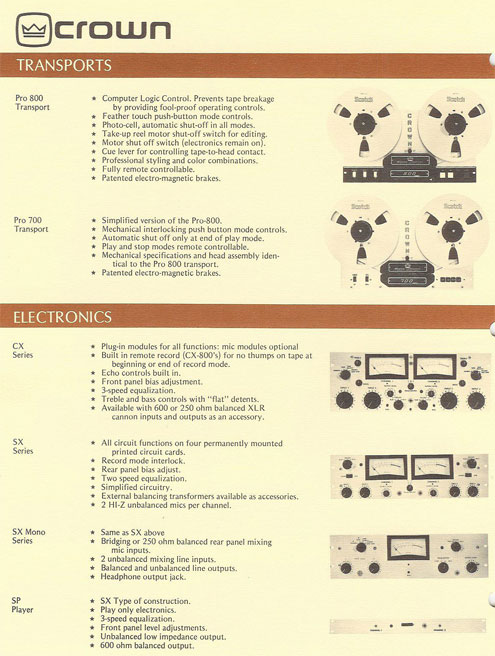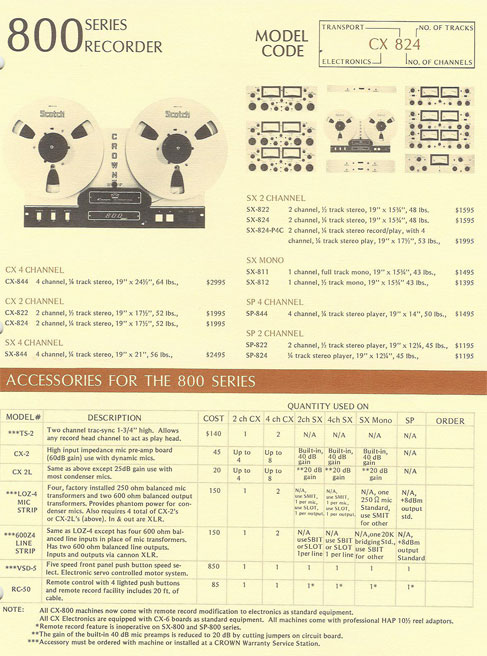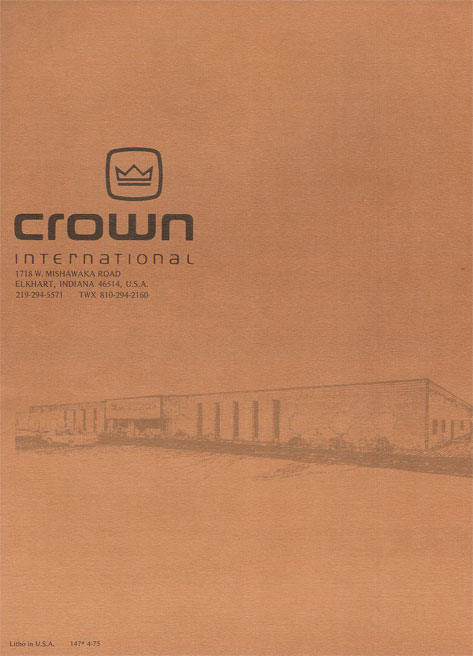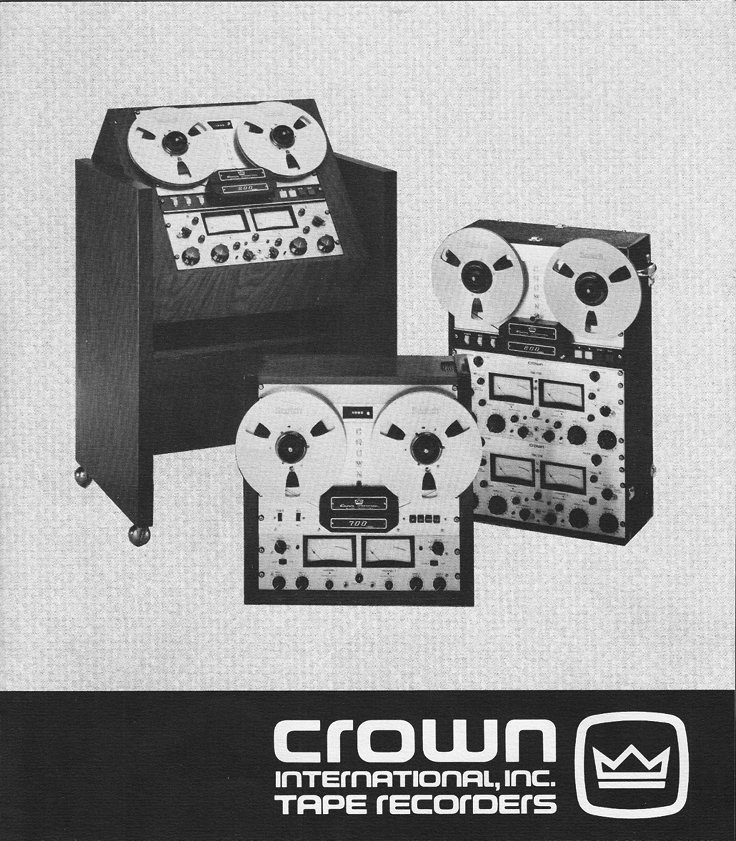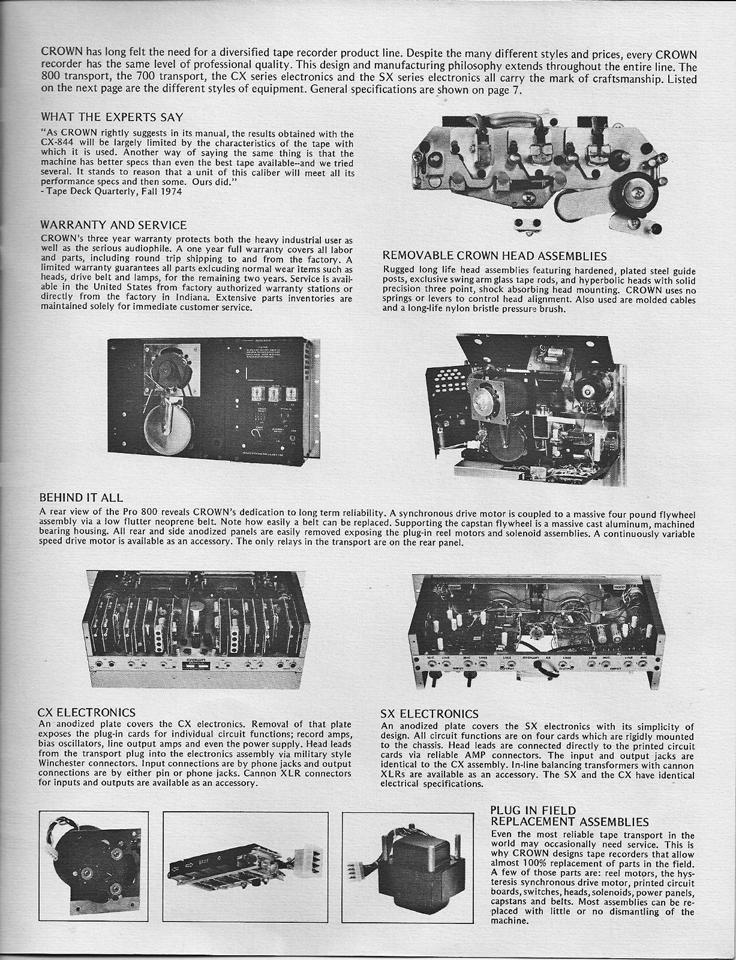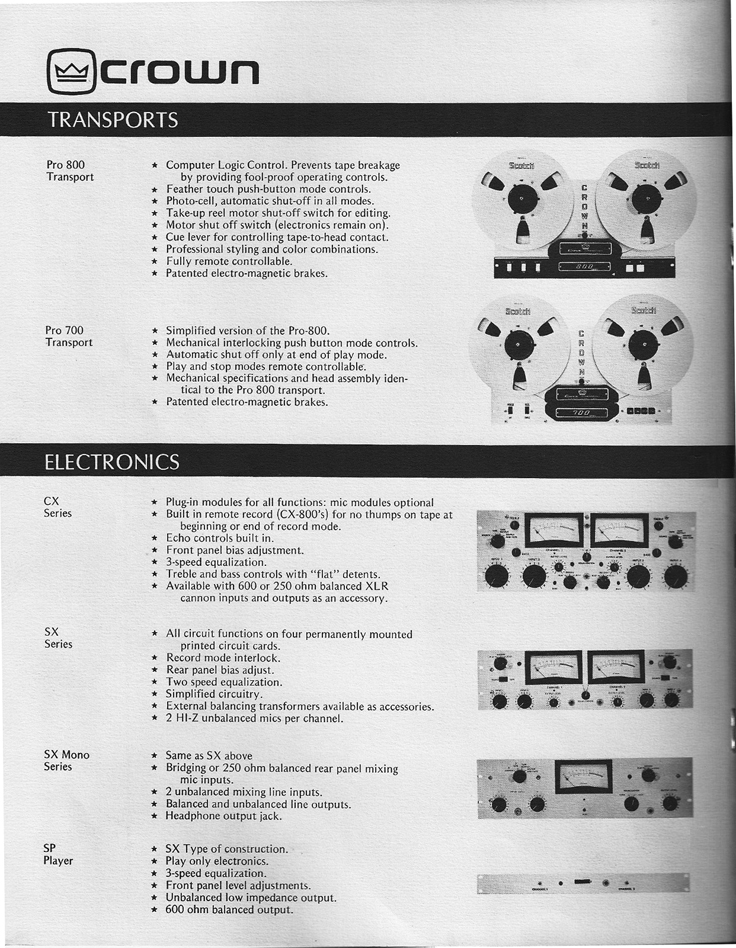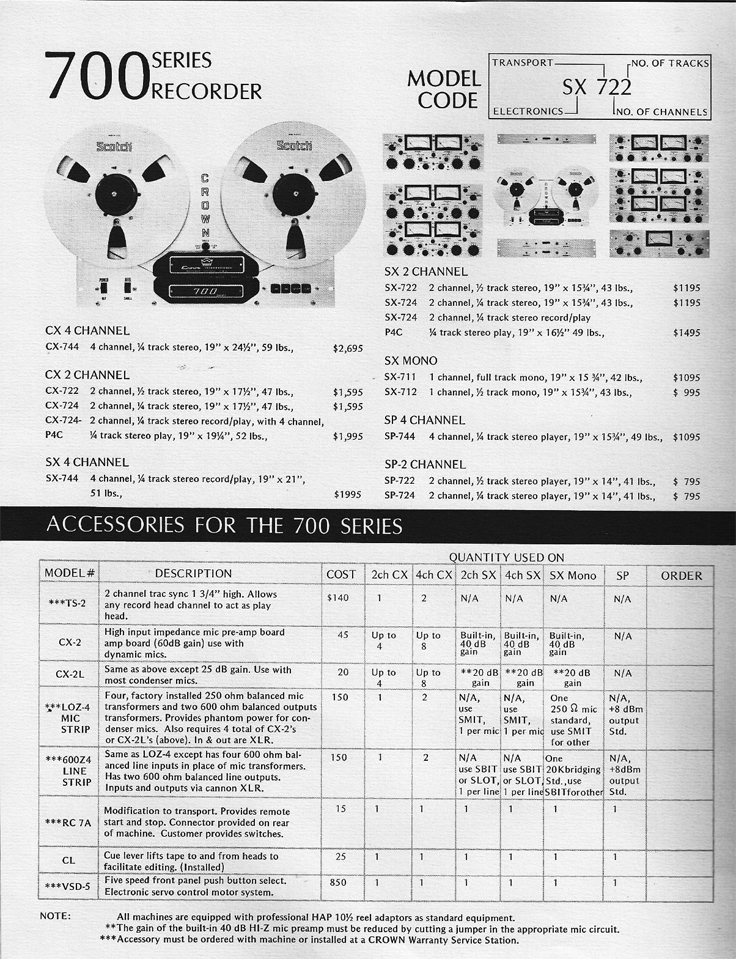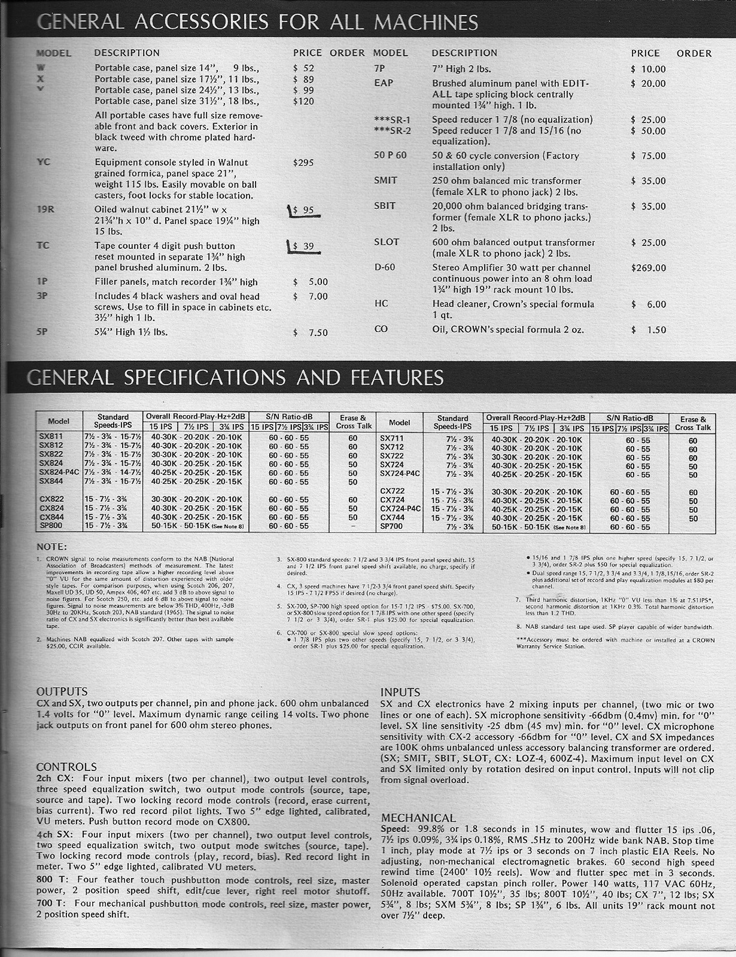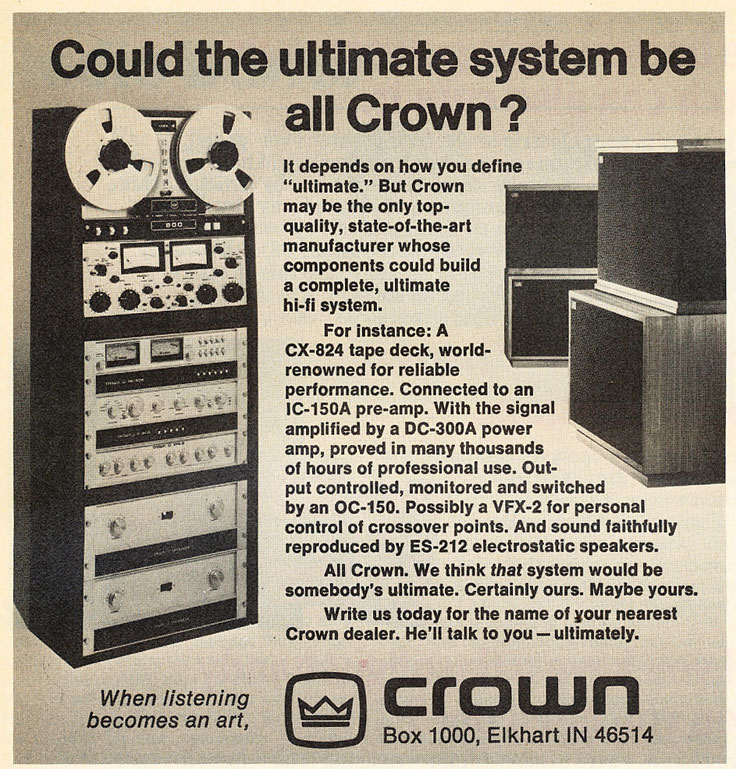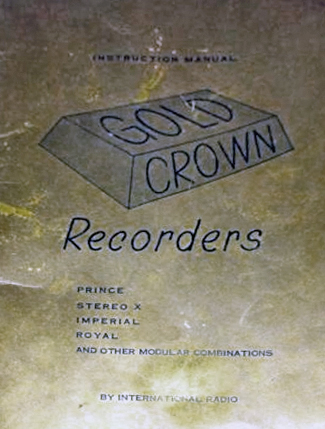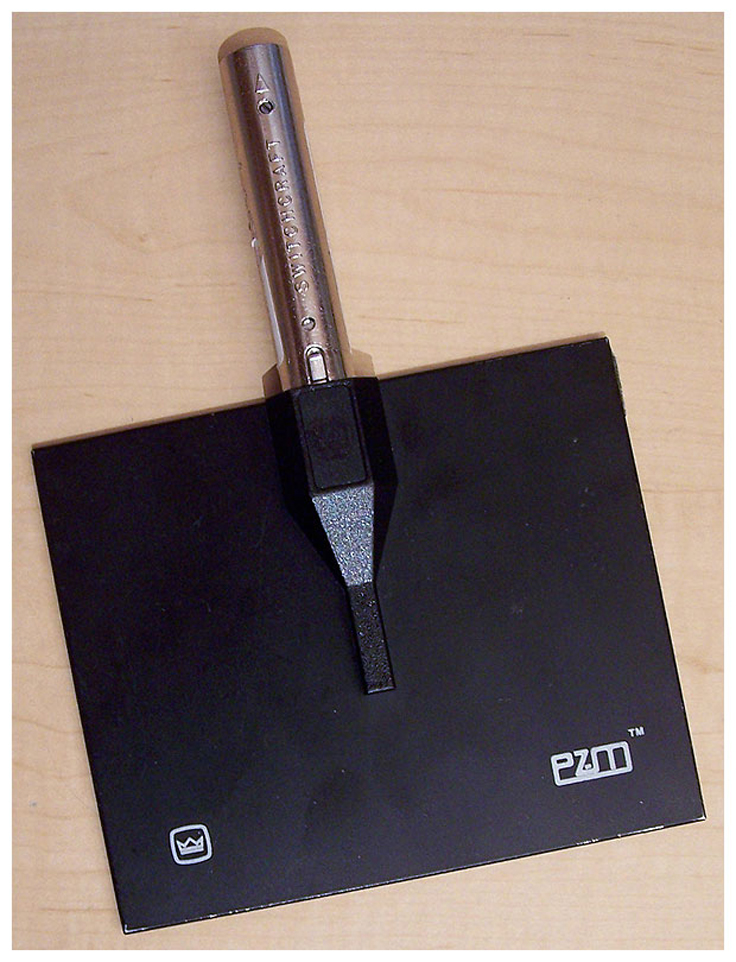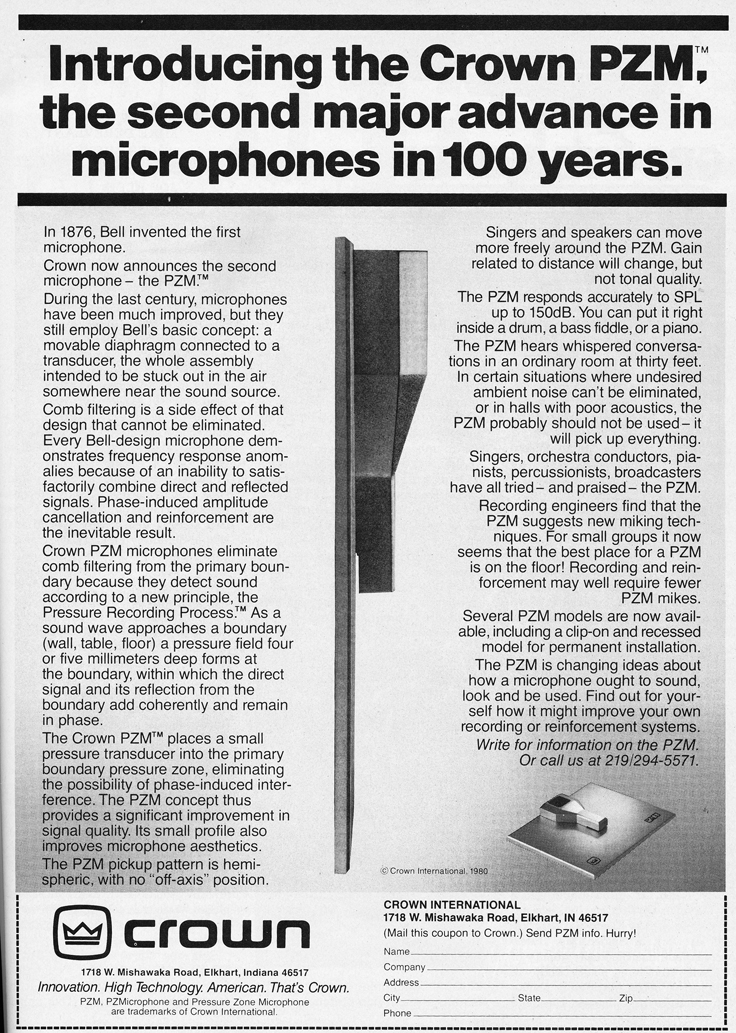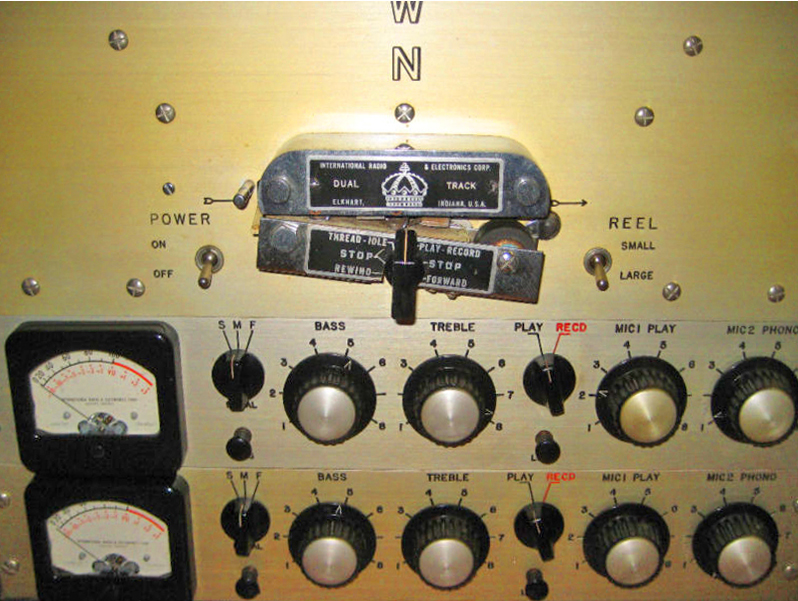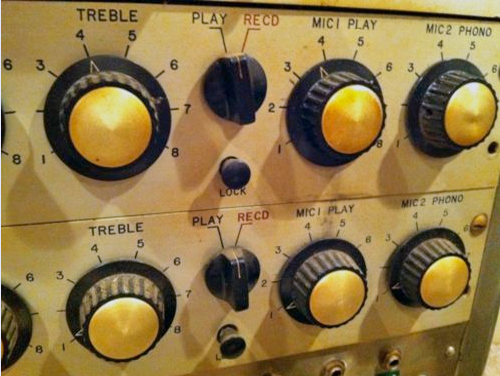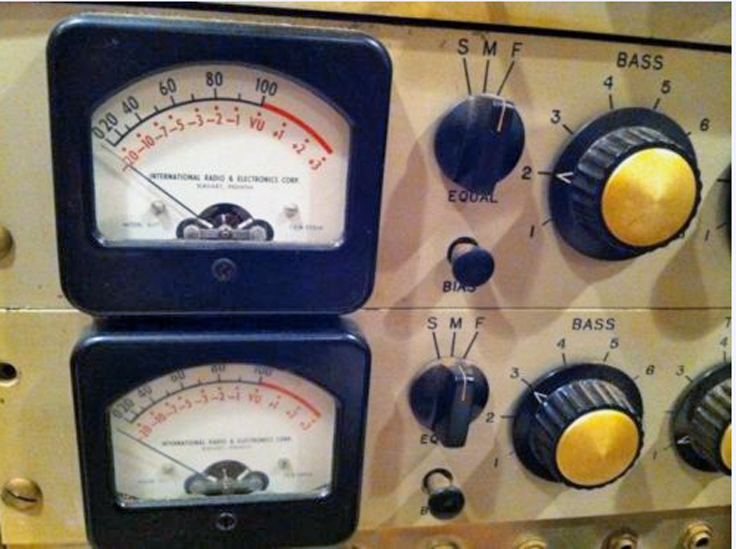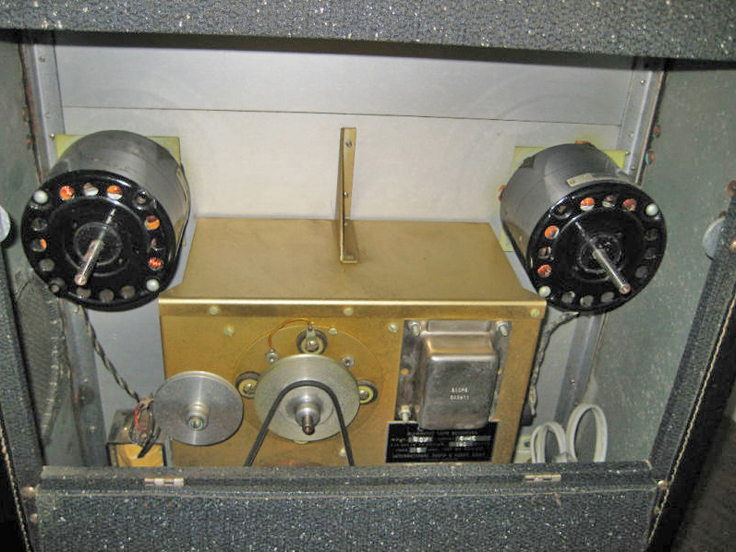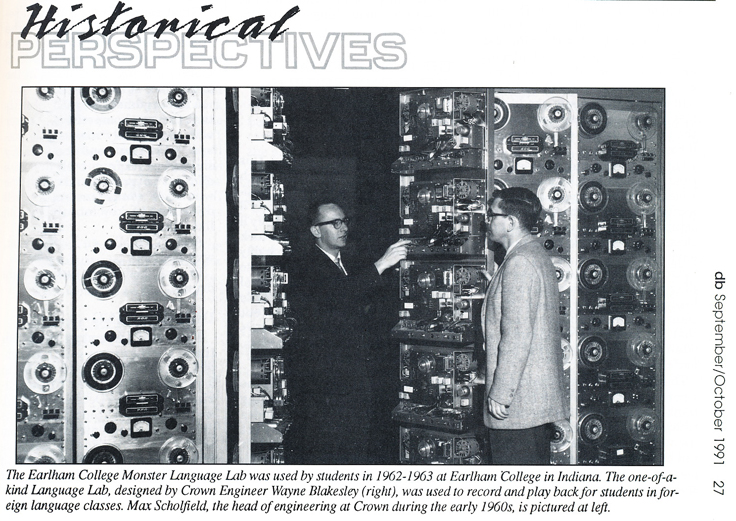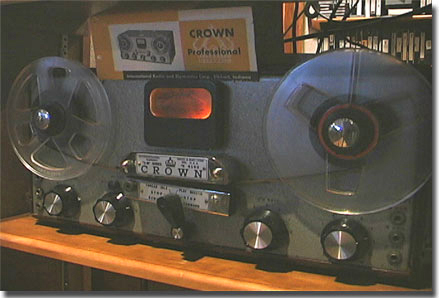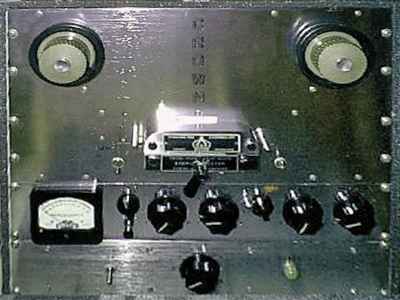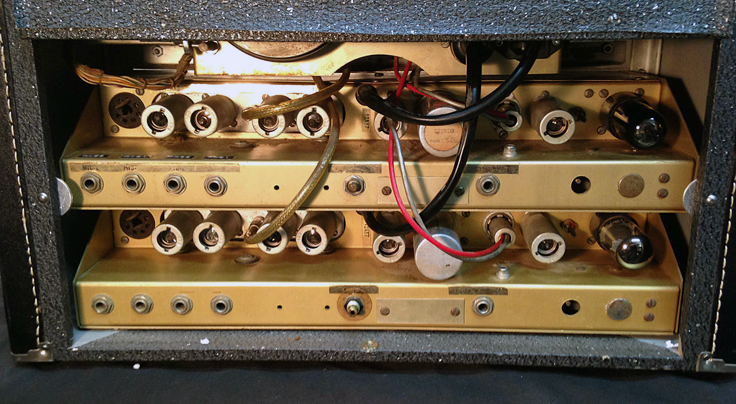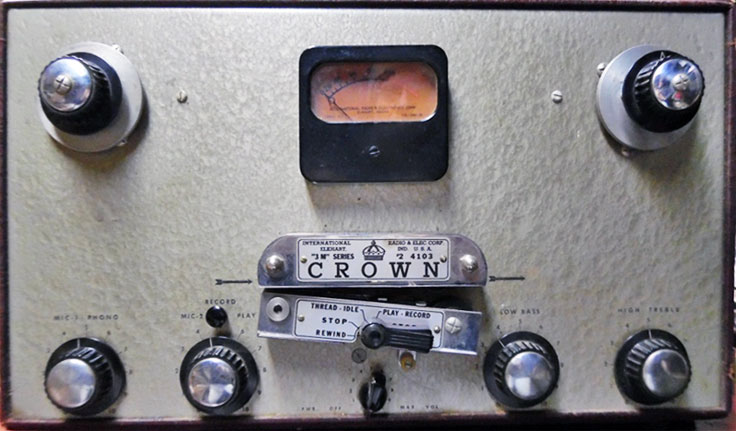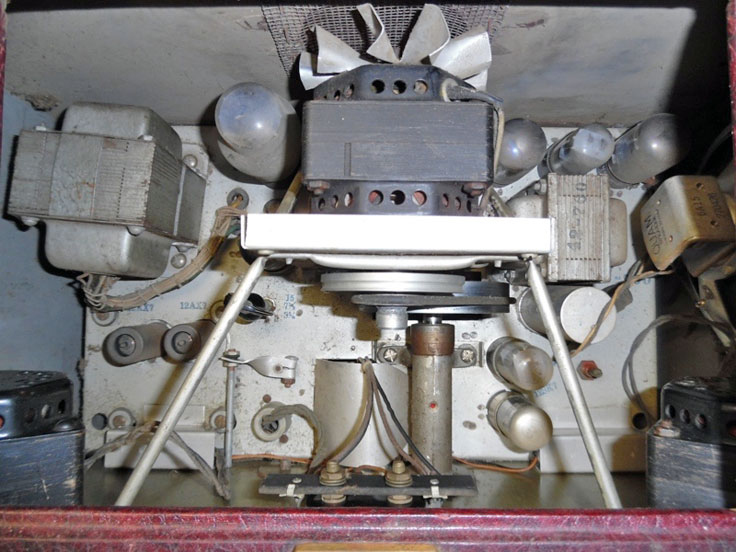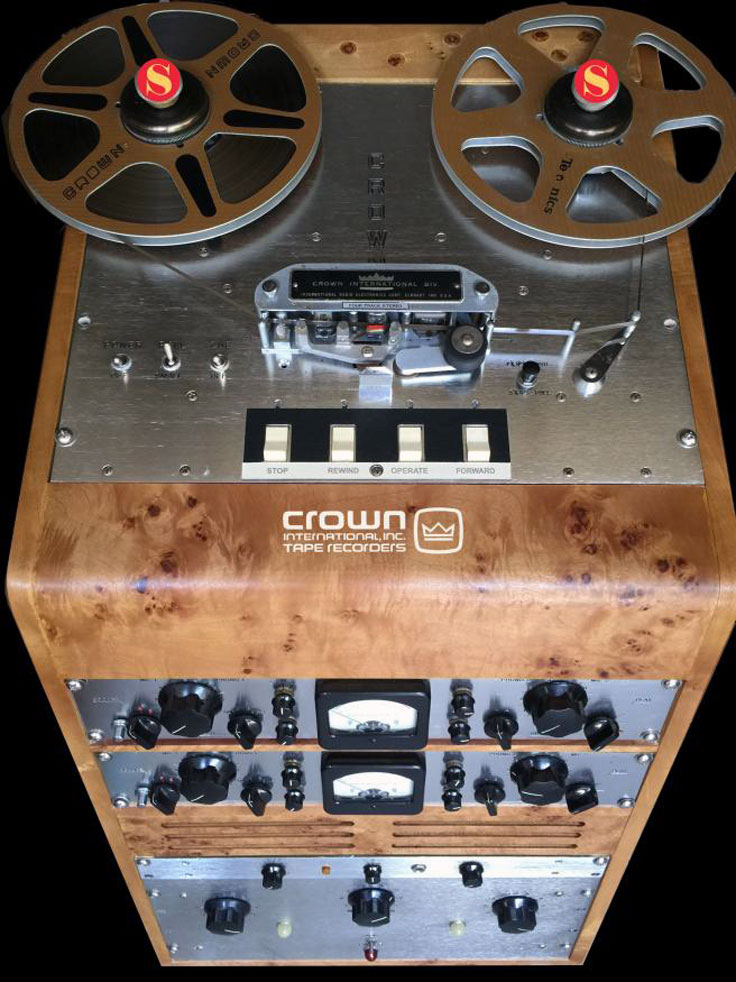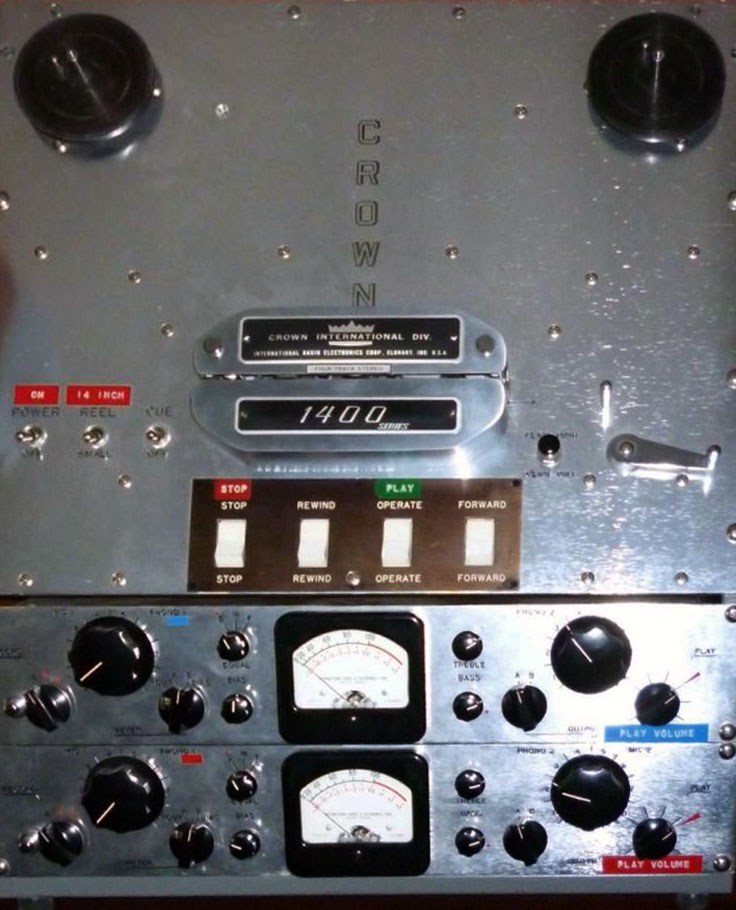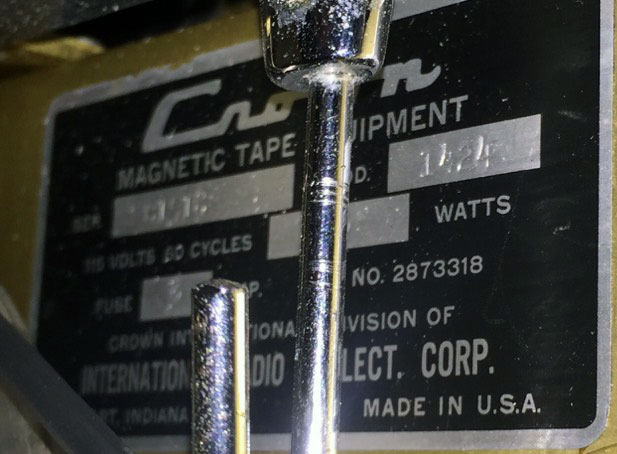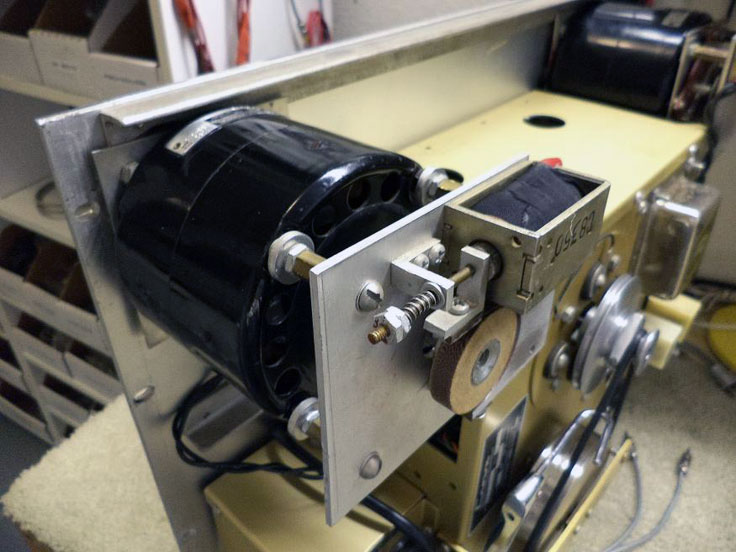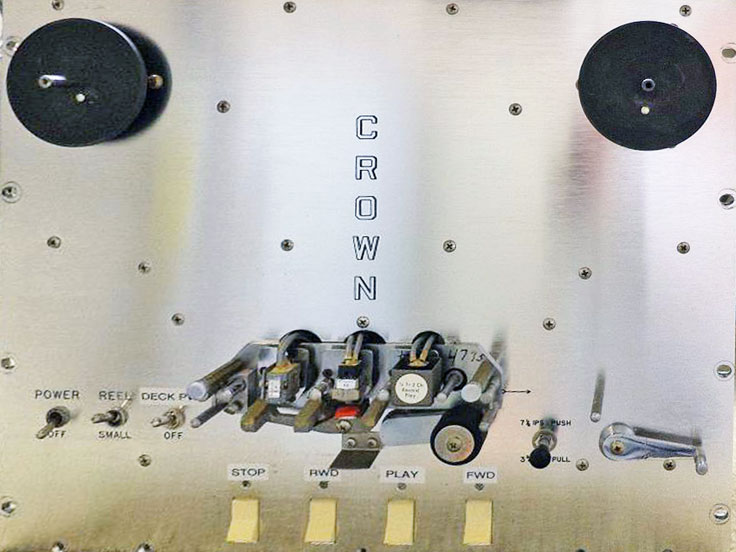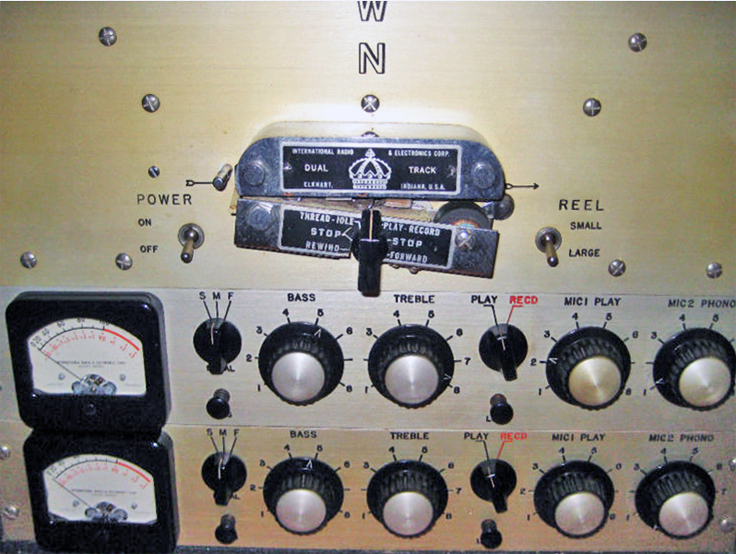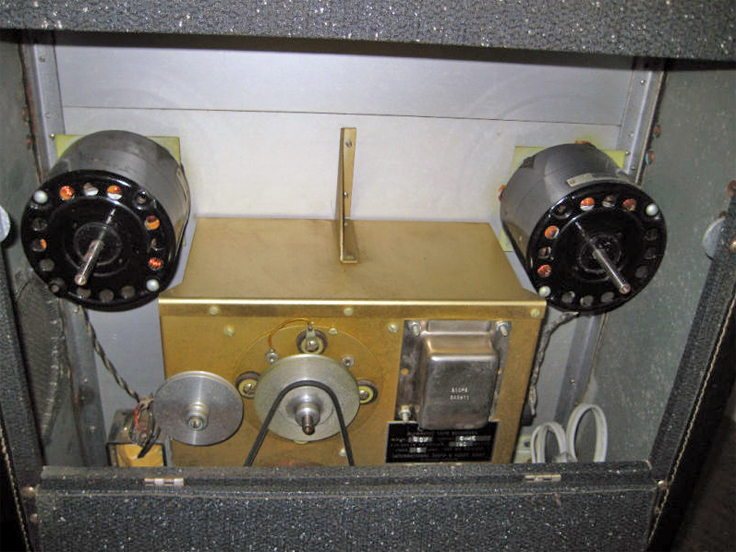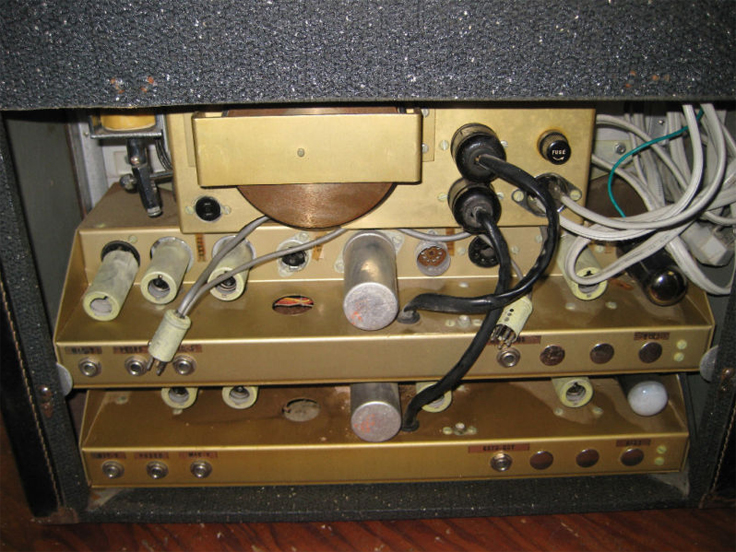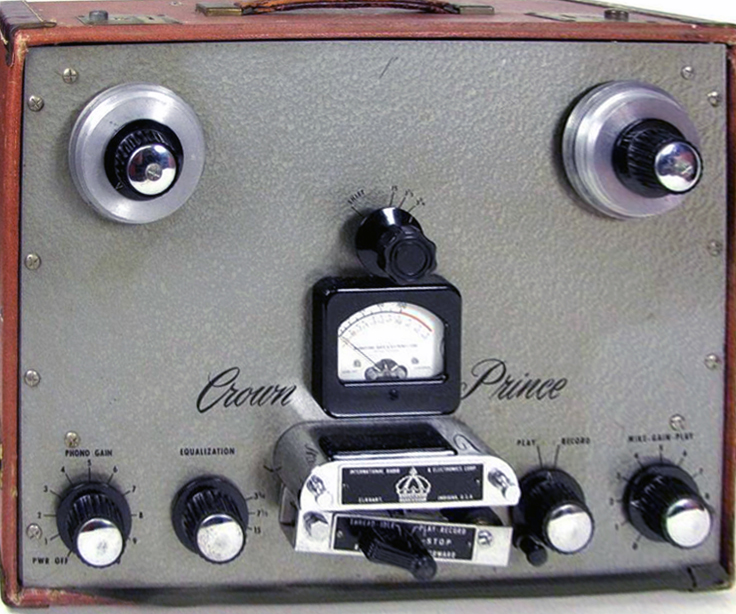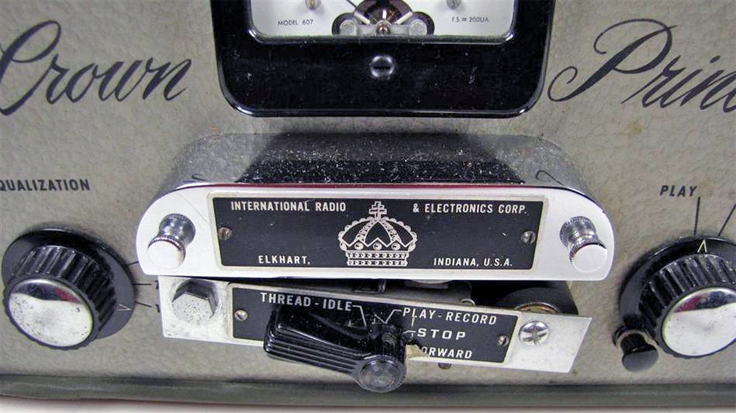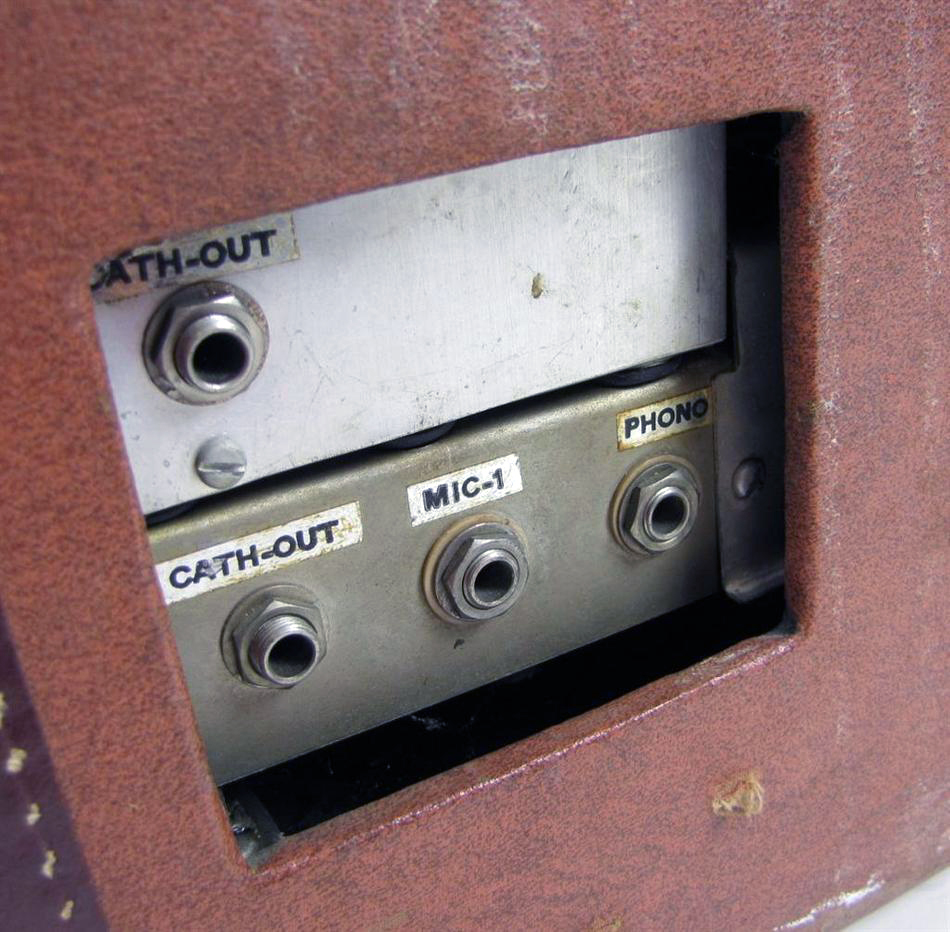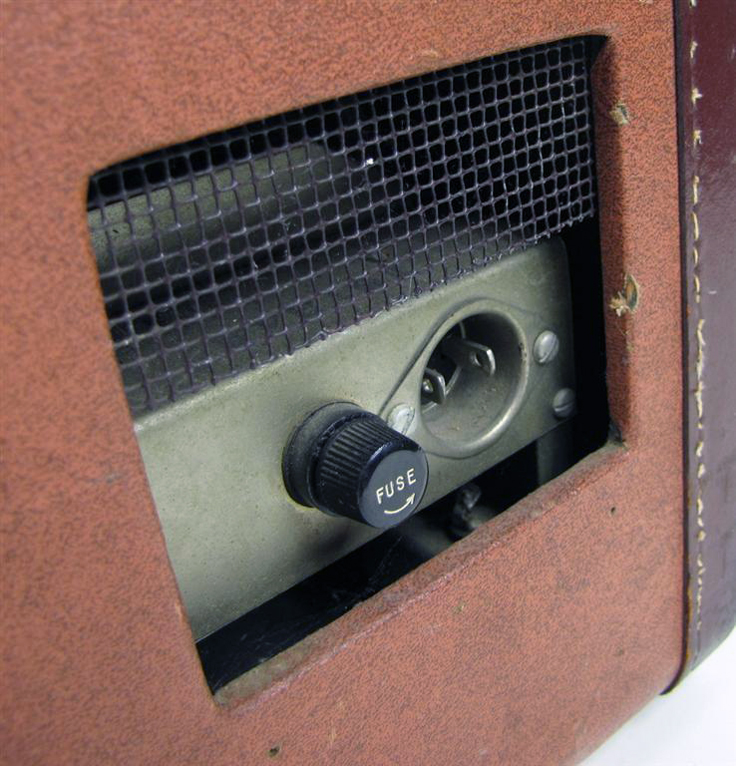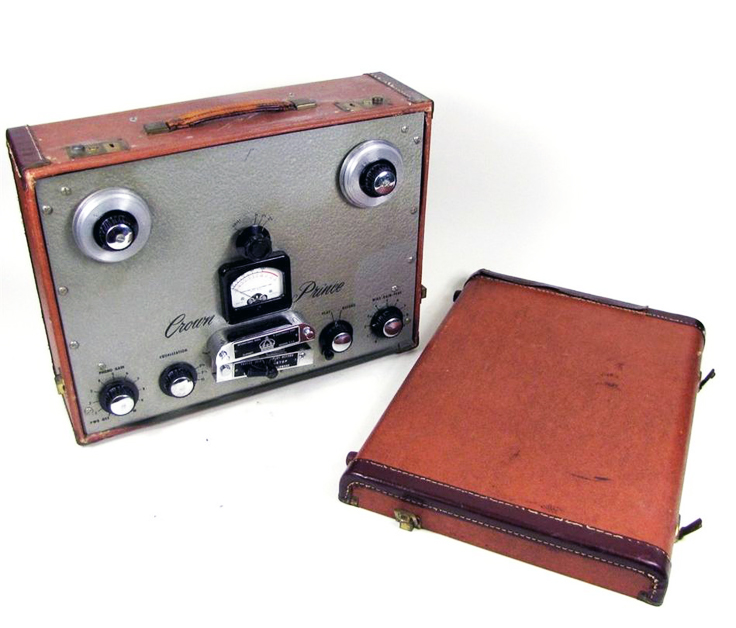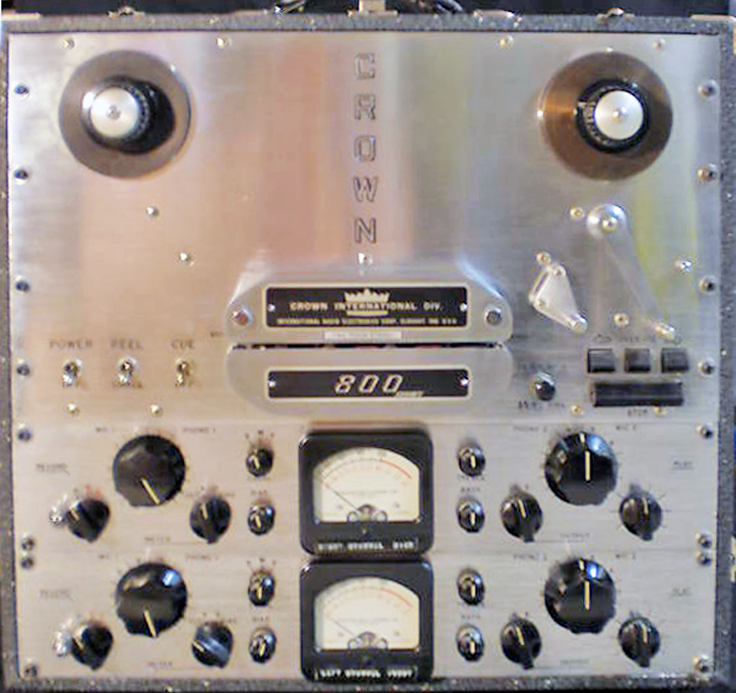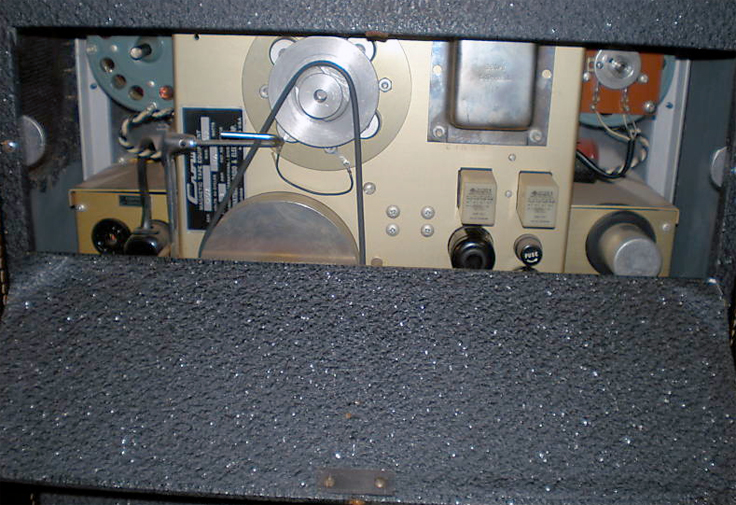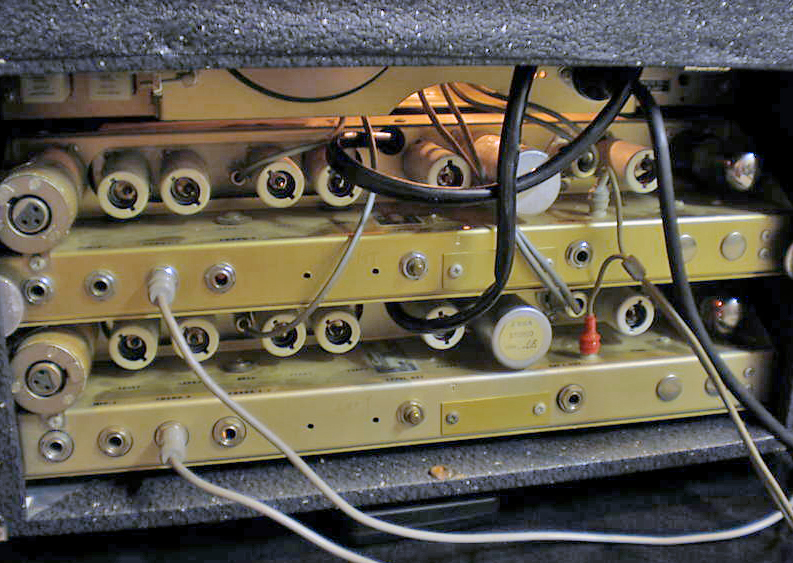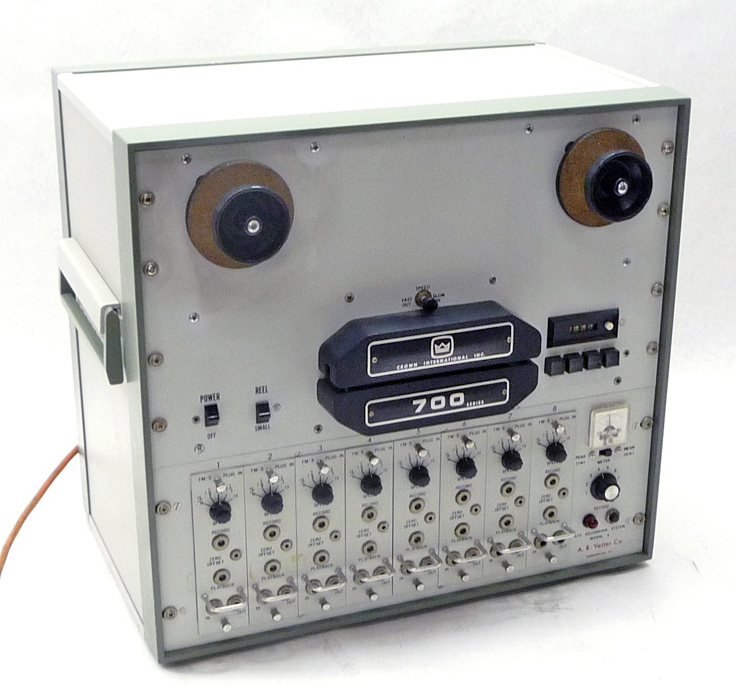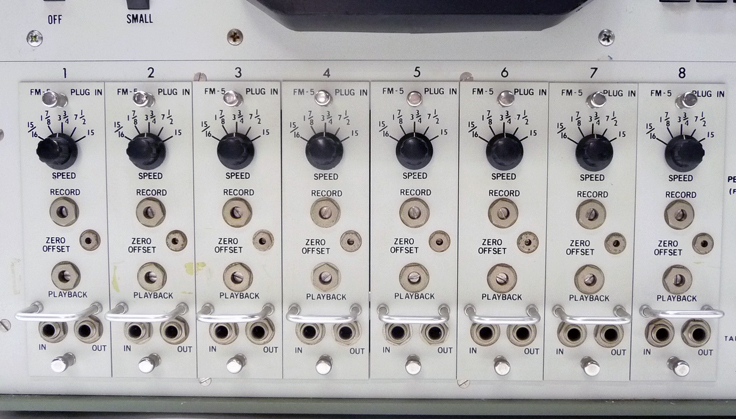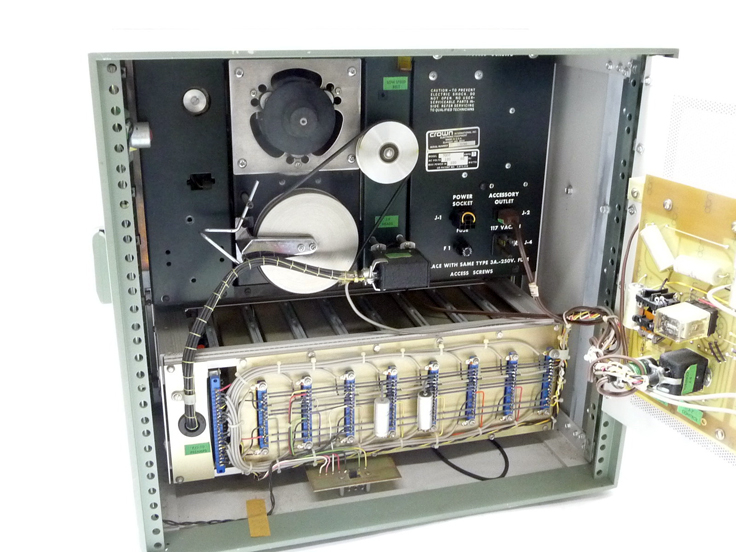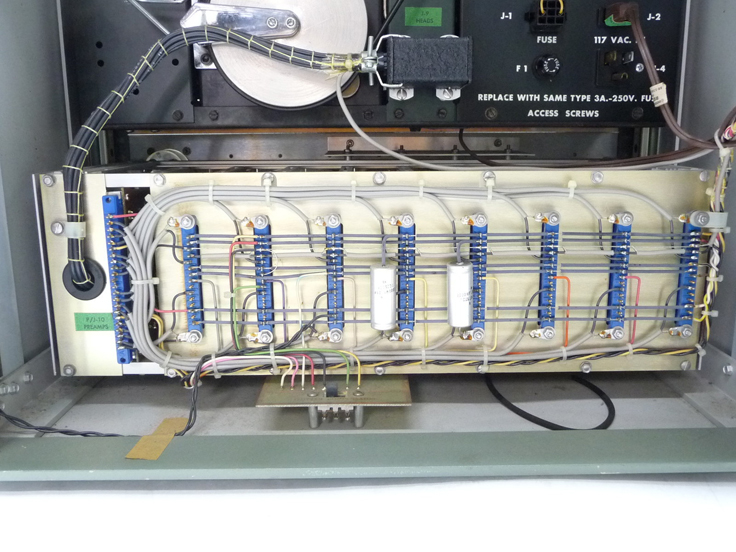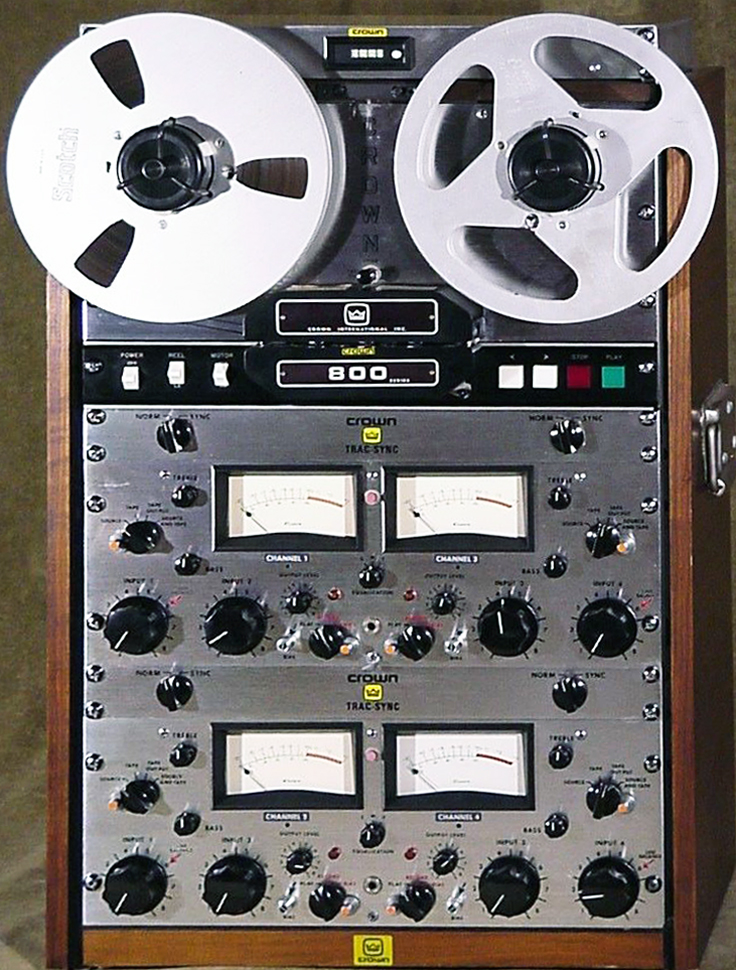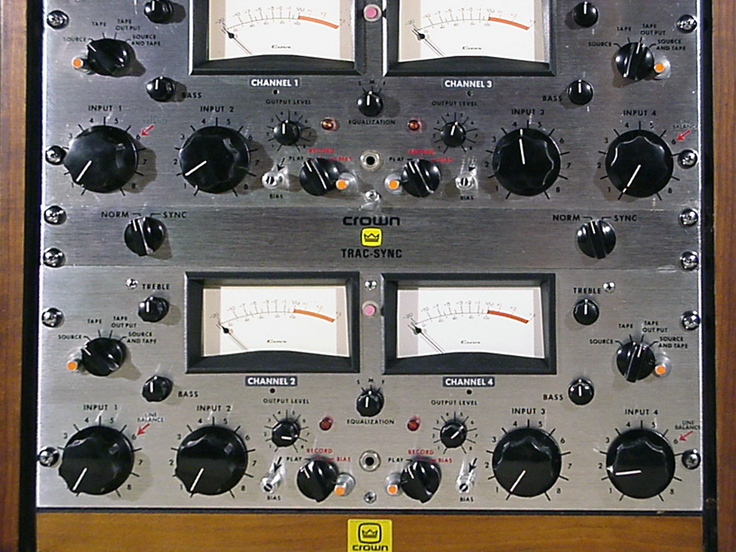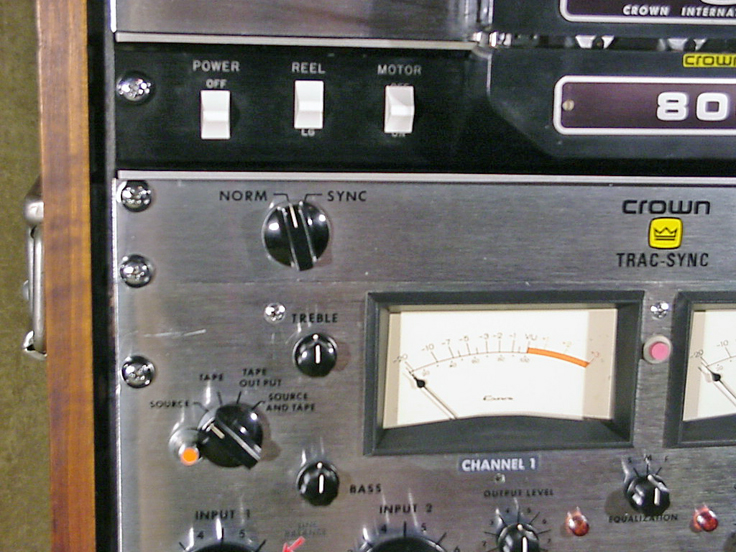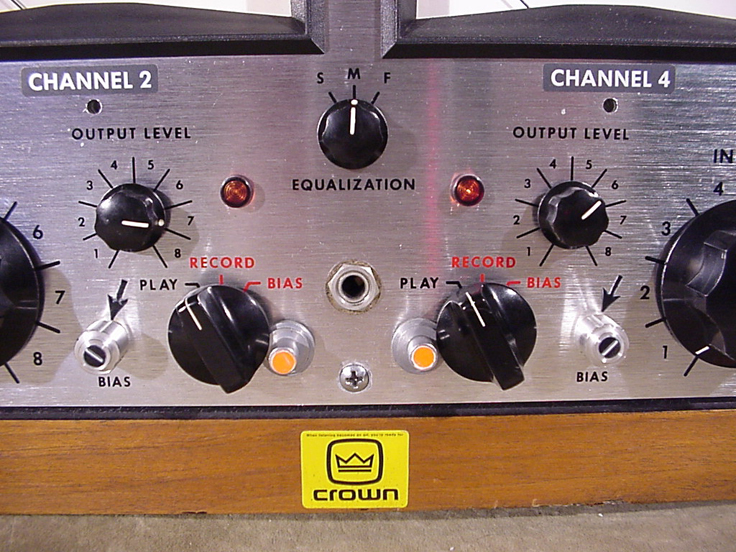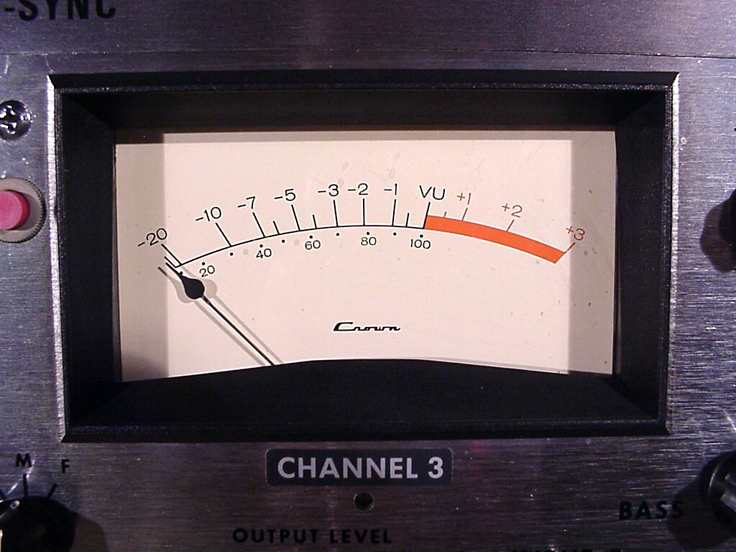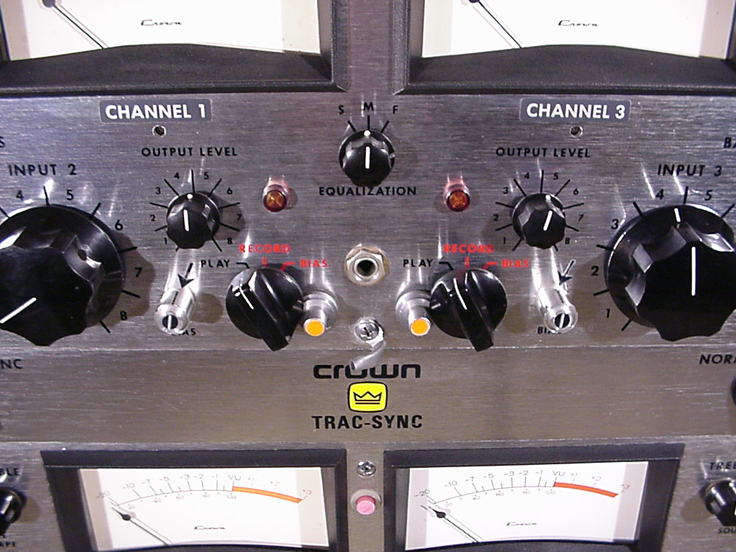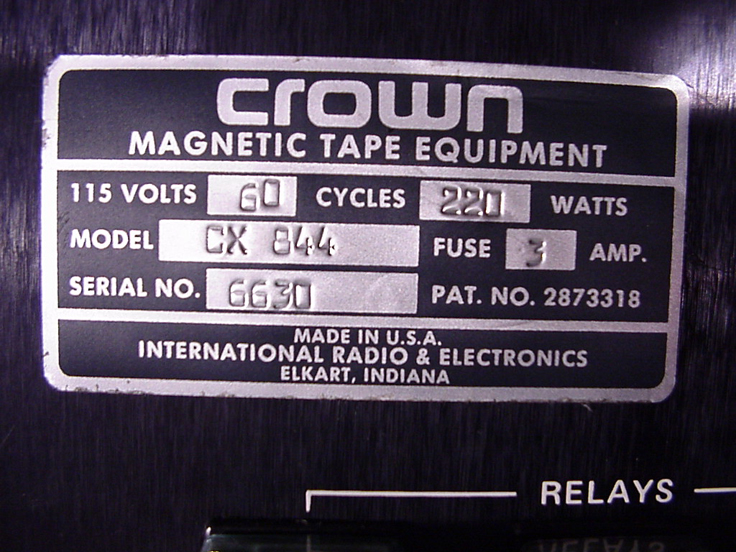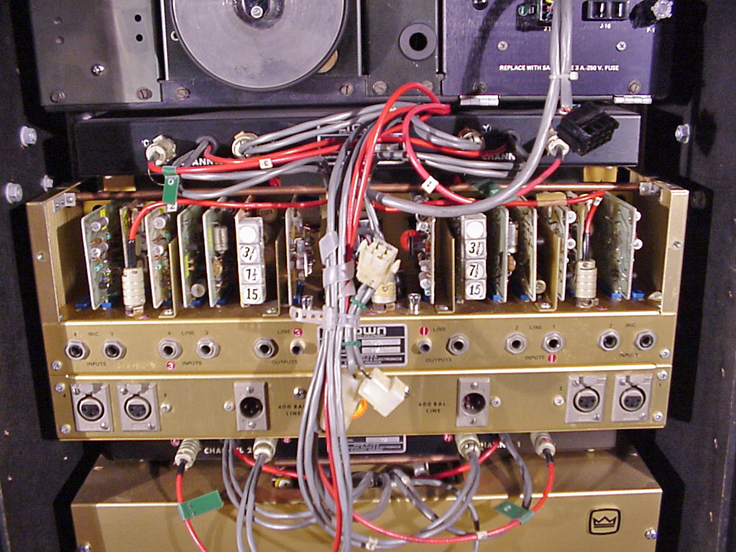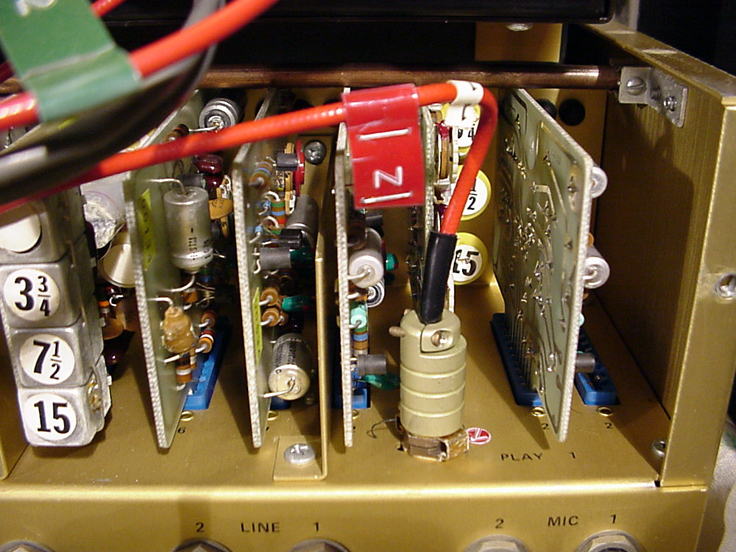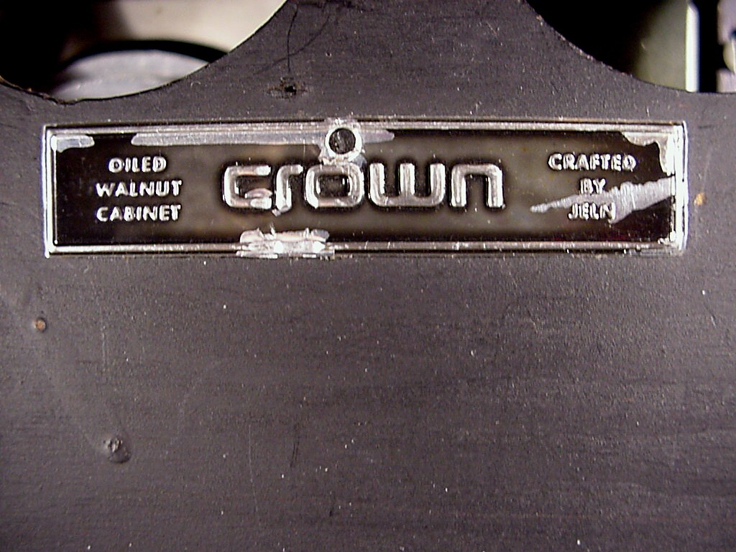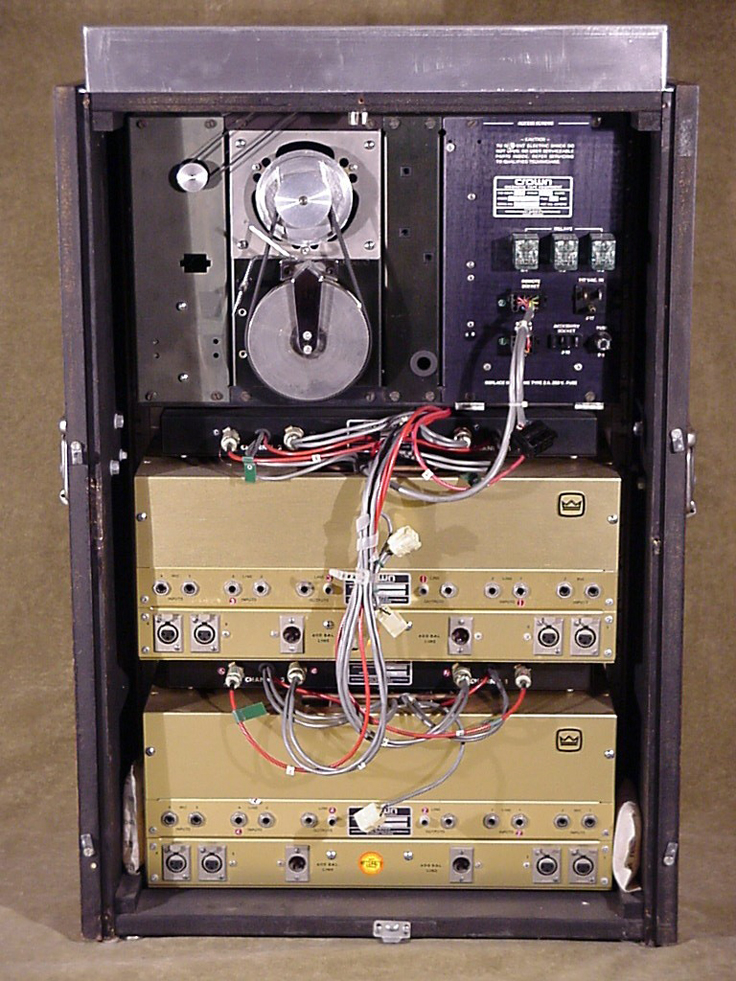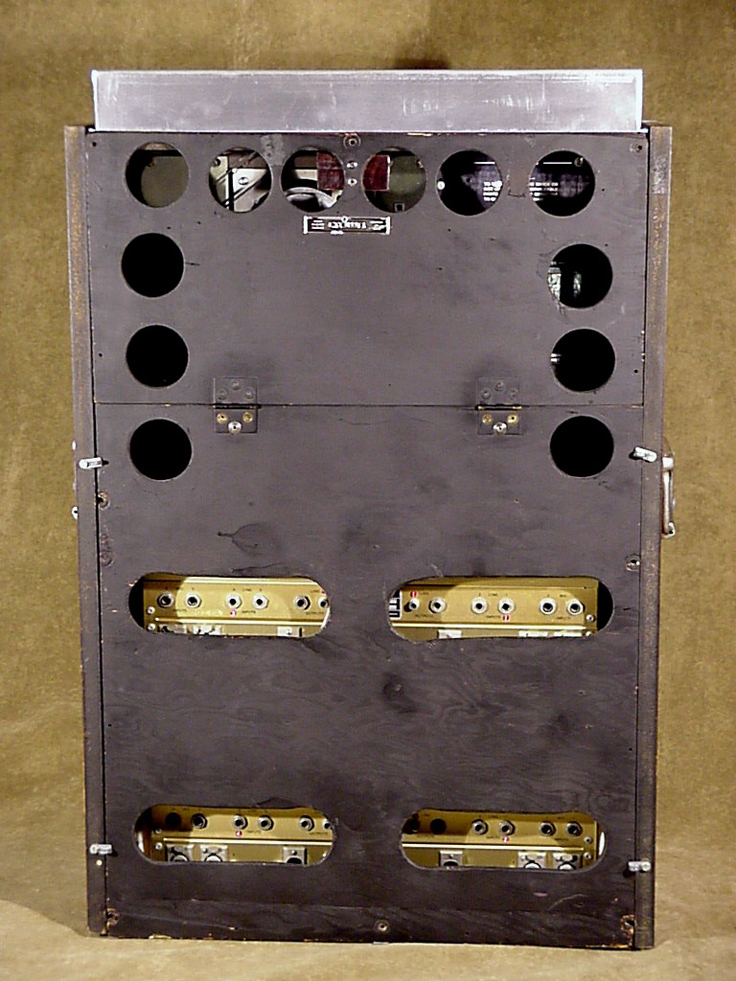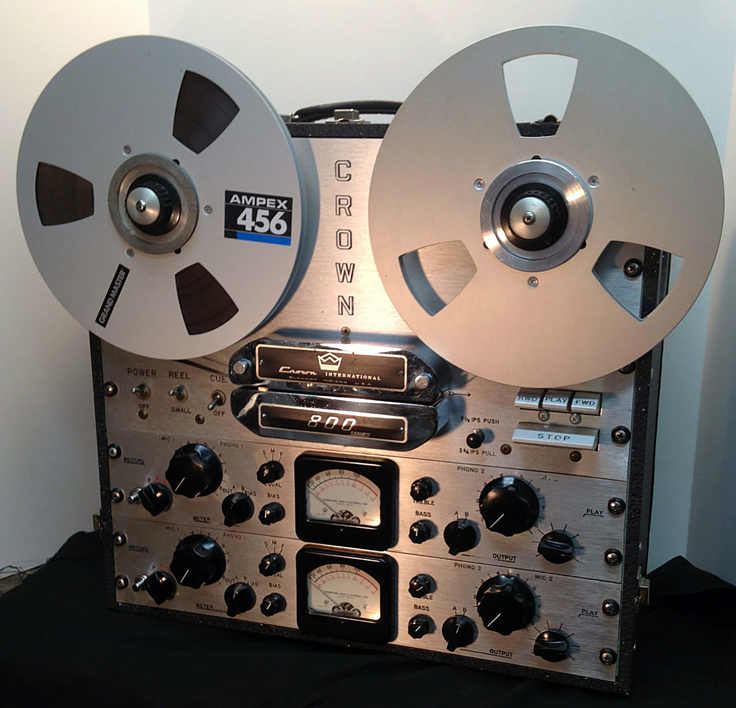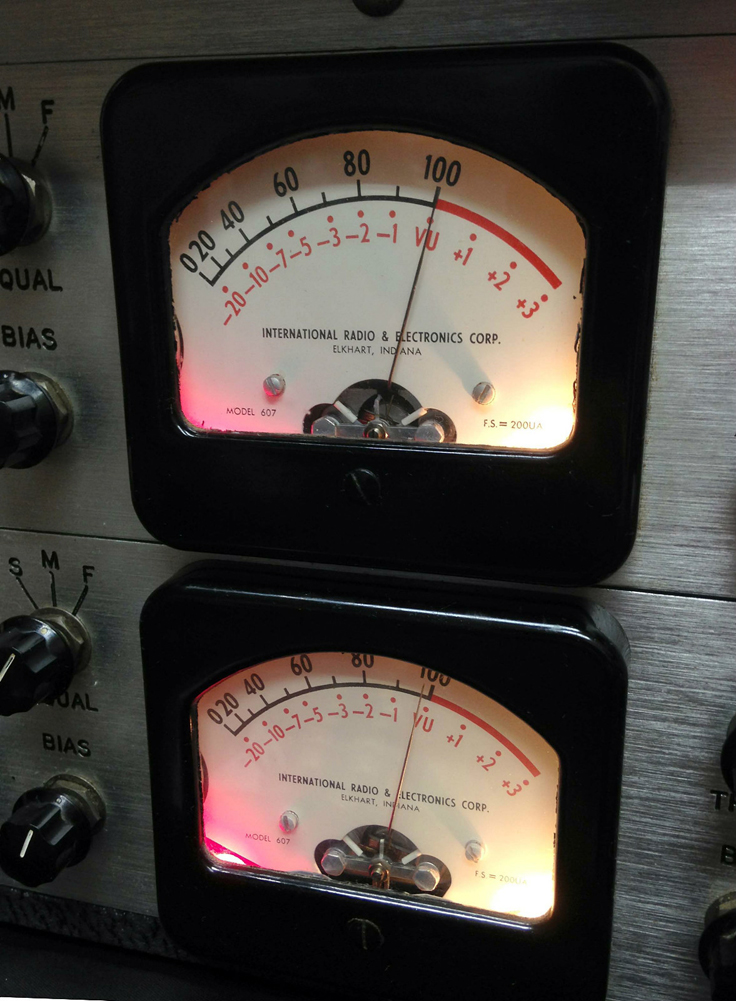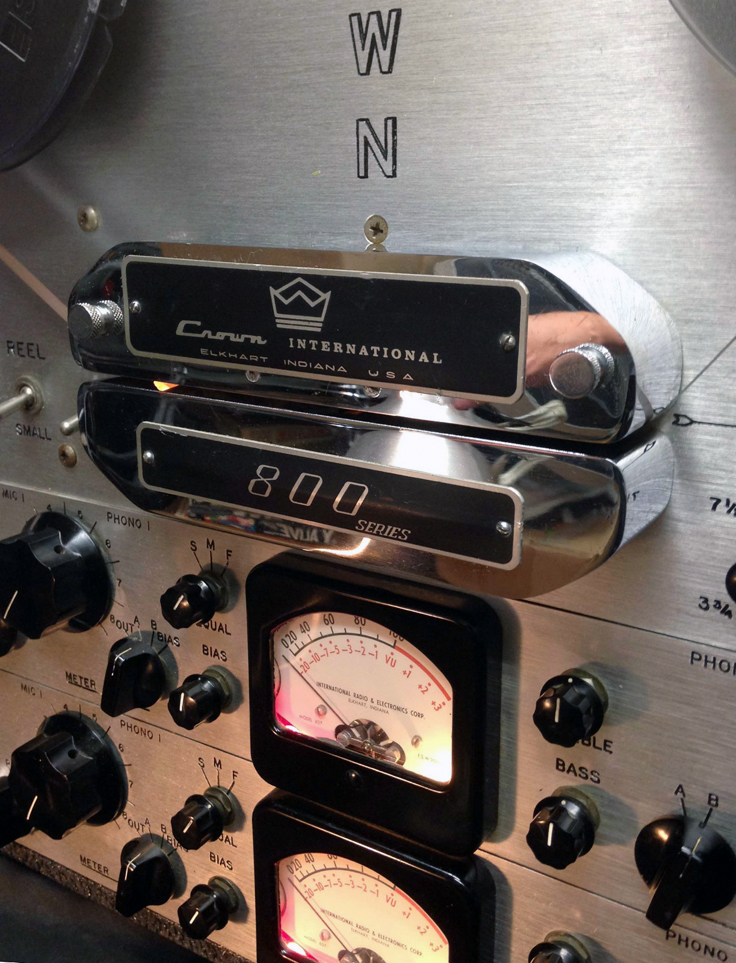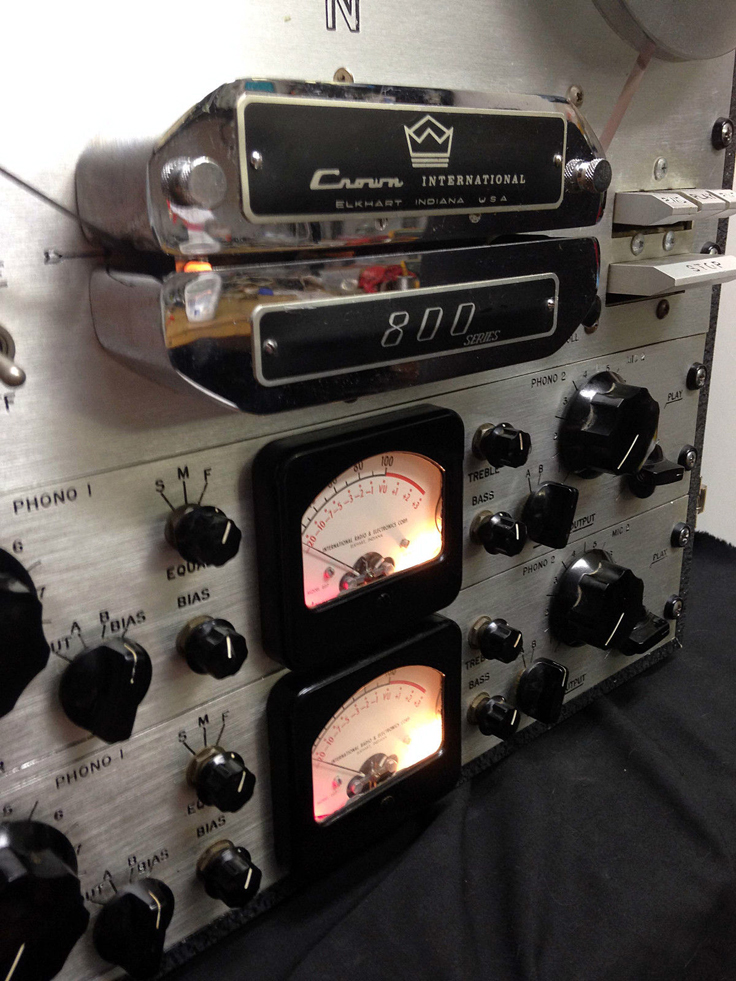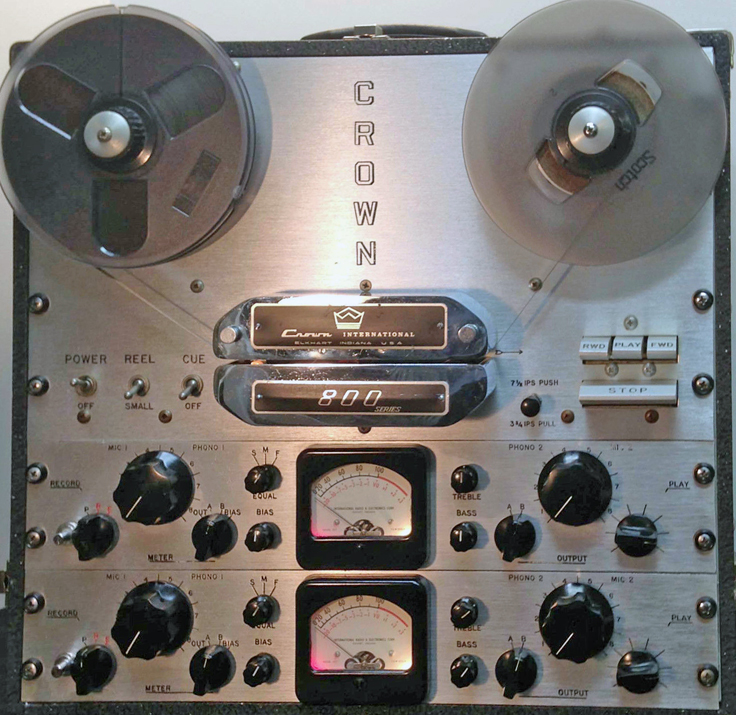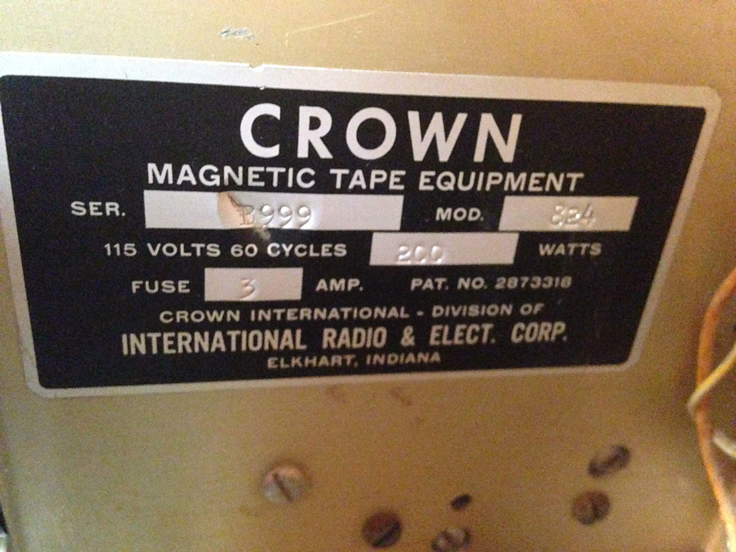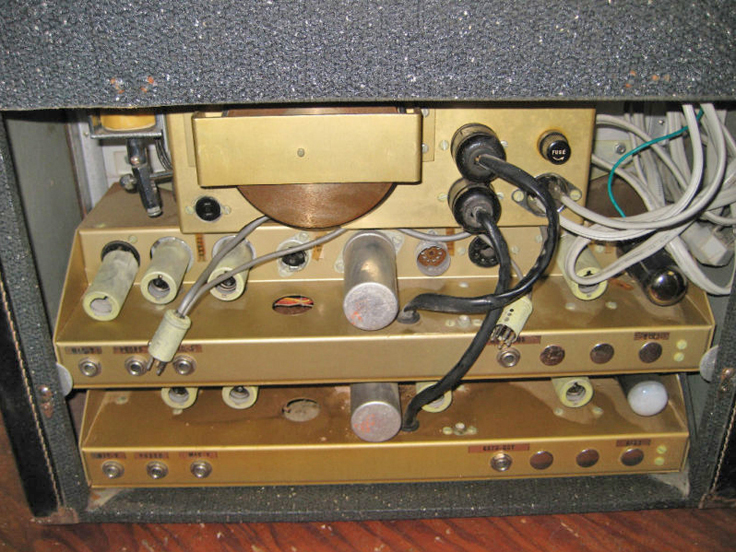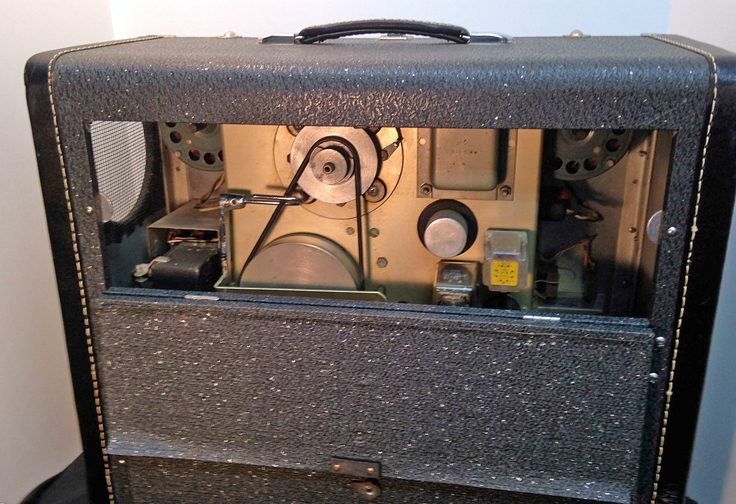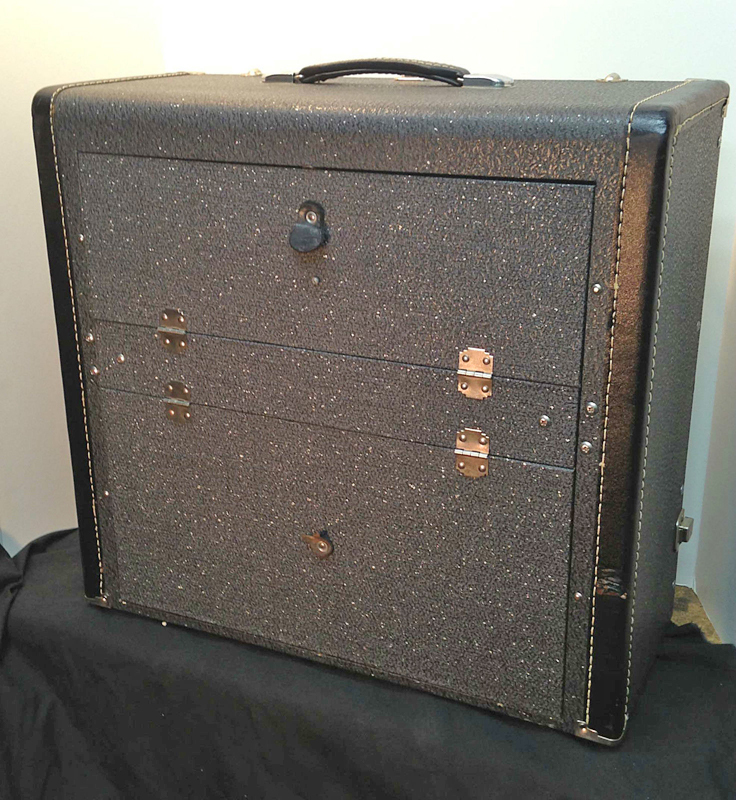
Crown Audio, Inc.
Manufacturer Profiles
© 2018 Museum of Magnetic Sound Recording • Webmaster • All pictures and content on this web site are the property of the Theophilus family,the Museum of Magnetic Sound Recording and reel2reeltexas.com • Photos of items in our collection are available for sale. We do NOT provide copies of ads, nor photos from other sources! All photo work is billed at studio rates and a deposit is required.
This is a list of information we have gathered from a variety of sources on some of the major analog reel to reel tape recorder and related equipment manufacturers. While we have strived to provide the best information available to us, there will be corrections and additions. We include personal stories about the companies when they are provided to us. We always invite input on corrections and updates. Thank you!
Statistics 2014 • 2015 • News coverage #1 News coverage #2 • view overview video of tape recorder collection • mobile video • more info • See also Multi-Track recording
Go to: • 3M • AEG/Magnetophon • AIWA • Akai • Altec • Amplifier Corp • Ampex • Ampro • A. R. Vetter • Astatic • Astrocom/Marlux • Bang & Olufsenl • Bell & Howell • Bell Labs • Berlant Concertone • Beyerdynamic • Brenell • Braun GmbH/ASE • Brüel & Kjær • Brush • Cetec Gauss • Concord • Craig • Crown • Denon •Dokorder • Dual • Edison • Eico • Electro Sound • Electro Voice • EMI/Gramophone • Fairchild • Ferrograph • Fostex • Freeman • GE • Grundig • HeathKit • ITC • JVC • KLH • Leevers Rich • Lyrec • Magnecord • Mara Machines • Marantz • Maxell • MCI • Mitsubishi • Nagra • Nakamichi • Neumann • Newcomb • Neve • Oki • Otari • Pentron • Philips • Pioneer • Presto • Radio Shack/Realistic • Rangertone • RCA • Reeves Soundcraft • Revere • Roberts • Rola • Sansui • Sanyo • Scully • Sennheiser • Shure • Solid State Logic • Sony • Soundcraft • Spectone • Stancil Hoffman • Stellavox • Stephens • Studer ReVox • Tandberg • Tape-Athon •Tapesonic • Teac/Tascam • Technics • Telefunken • Thorens • Tolnai • Toshiba • Uher • Viking • Vortexion Ltd UK • Webster Chicago/Webcor • Webster Electric • Western Electric/Altec • Wilcox-Gay • Wollensak
View calendar which lists company creation dates associated with world and recording history
Crown Audio, Inc., 1718 W. Mishawaka Road, Elkhart, IN 46517 USA 1947 to present
From its humble beginnings in 1947, Crown International grew to become one of the world's largest and most respected manufacturers of power amplifiers and microphones for professional audio markets.
Crown’s history traces back to 1947 and an Elkhart, Indiana minister named Clarence C. Moore (1904-1979). Moore, a longtime radio enthusiast, had spent the early part of the ’40s in Quito, Ecuador working for HCJB, a non-profit Christian broadcasting and engineering group.
Following his return to the United States, he felt the desire to supply Christian broadcasters like HCJB with quality electronic products. As a result, Moore founded
International Radio and Electronics Corporation (IREC) in 1947 and converted a former chicken coop into the budding manufacturer’s first production facility.
The company’s early reputation was built on a family of rugged and compact open-reel tape recorders designed to operate reliably when used by missionaries in remote, often-primitive regions of the world.
After modifying and distributing several existing models (Magnecord, Recordio, Pentron and Crestwood) for the first couple of years, Moore obtained a patent in 1949 for a ground breaking invention: the world’s first tape recorder with a built-in power amplifier (15 watts).
Simply Crown
Eventually, Moore’s wife and co-founder, Ruby (deceased 2002), suggested that ‘International Radio and Electronics Corporation’ was too long a name for the company. Since IREC had by this point produced
vacuum tube tape recorders branded ‘Royal’ and ‘Imperial’, in addition to the fact that the emblem on those products was a fancy crown, she felt that the company should simply be called Crown.
Her husband agreed, and, in the ’60s, the company’s name was changed to ‘Crown International, a division of International Radio and Electronics Corporation’.
Over the years, state-of-the-art innovations have made Crown one of the most successful manufacturers in the marketplace.
By 1963, solid state electronics development allowed Crown to produce a more robust tape recorder, and in 1964, their first solid state power amplifier: the low-profile SA 20-20.
In the '60s, the introduction of the DC300 high-powered, solid-state amplifier offering 150 watts per channel
at eight ohms and AB+B circuitry moved Crown into a leadership position in worldwide markets.
Well over 30 years later, many DC300s are still faithfully being used in professional audio applications.
Fire 1971
A fire destroyed 60% of the Crown facility on Thanksgiving Day 1971 and rendered much of the remaining building severely damaged. US$1 million of uninsured assets were lost.
The plant was rebuilt, and D-60 amplifier production was brought back on line within six weeks.
Finally, in 1975, the stockholders voted to change the name of the corporation to Crown International, Inc.
Acquired by Harman International in March of 2000, Crown has continued to move forward, producing numerous innovative designs.
In 2002, 55 years after Mr. Moore founded the company, Crown has more than 500 employees and over 1600 dealers worldwide.
Crown ads and photos over the years
1952
1954
1957
1958
1960
Crown tape recorder improvements include separate electronic and transport sections, push button and relay control, and remote control
capabilities.
The Gold Crown Stereo X recorder includes several innovations in component electronics.
1961
1962
1963
The first solid state, professional quality tape recorder is invented at Crown.
1964
Crowns first solid state amplifier, the SA 20-20, is an industry first, low-profile unit (1 3/4 inches high).
1965
1966
1967
Crown raises the bar once more with the introduction of the DC-300 amplifier. It is the worlds first reliable, solid-state, high-power amplifier. Rated conservatively at 150 watts per channel, the amplifier features extremely low distortion and noise. Two years after its introduction, High Fidelity magazine calls it the worlds best stereo amplifier.
1968
The Pro 800 Series tape recorders feature a logic-controlled transport.
1975
International Radio and Electronics Corporation becomes Crown International, Inc.1976
1977
Crown ends tape recorder production
More About Crown
In 1947, Clarence and Ruby Moore began by modifying existing makes and models of tape recorders to make them more rugged. In 1949, Moore obtained a ground breaking patent, the first tape recorder with a built-in power amplifier for public address duties, which was introduced in 1950. In 1953, Crown added a line of compact loudspeakers as accessories to the reel to reel tape recorders.
The Crown DC300, introduced in 1967, helped define the era of modern power amplifiers
In 1959, Crown began making standalone tube power amplifiers. By 1963, solid state electronics development allowed Crown to produce a more robust tape recorder, and in 1964, their first solid state power amplifier: the low-profile SA 20-20.[2] In 1967, the DC300 was introduced as the first AB+B circuitry amplifier with 150 watts per channel at eight ohms. The DC300 proved very popular with sound reinforcement system owners and moved Crown into a leadership position in terms of power amplifier sales worldwide. As well, the DC300 was seen as a breakthrough product by commercial sound system contractors seeking to power their constant voltage speaker systems without the frequency response limitations and power losses associated with output power transformers which had previously been required.
In 1971, the grounded bridge amplifier design was invented by Crown, allowing greater output power without increasing amplifier size[6] and also gave lower distortion, less thermal stress and greater reliability. The first grounded bridge product released by Crown was the M600 amplifier (1974) primarily employed for commercial sound installations including constant voltage loudspeaker systems. Crown received a patent for the invention in
1974, After proving itself in the field, the topology was used to design the Microtech MT-1000 in 1984. Further development of the grounded bridge yielded the Macrotech line which set a new standard for touring sound reinforcement in 1992 with the MA-5000VZ.
In 1976, Crown patented the synergistic equalizer,releasing the stereo EQ-2 graphic equalizer which used a combination of shelving-style tone controls and eleven active frequency adjustment faders per channel. The faders were connected to constant bandwidth, variable Q, 1/2-octave filters placed on octave centers but with adjustable frequency knobs to shift the center frequency for greater flexibility. A limited number of units were sold to audiophiles and audio researchers.
By 1977, all of Crown's tape recorder products had been phased out.
In November 2007, after 40 years of service, the Crown DC300 was inducted into the TEC Awards Technology Hall of Fame in New York on the opening day of the Audio Engineering Society's 123rd convention. George Peterson, executive editor of Mix magazine, said of the DC300 that it "was a classic that really ushered in and defined the era of the modern power amplifier."
In 1979, Crown introduced the PSA-2 & SA-2 power amplifiers with analog computer control of transistor performance to maximize output characteristics. The FM-1 stereo radio tuner was praised at the Consumer Electronics Show.[2] In 1981, the FM-2 with digital tuning was released.
A line of Pressure zone microphones (PZM) was introduced by Crown in 1980,[2] culminating in the PZM-30 series in 1990. Other microphones introduced by Crown included the PCC-166 directional boundary microphone in 1986, the tiny GLM series and the patented differoid CM300 in 1987. The SASS stereo microphone was patented in 1989. Garth Brooks was the first performer to wear the Crown CM311 headset microphone in 1993.The CM700 studio condenser was introduced in 1995.
Photos
We appreciate all photos sent to our museum. We hope to successfully preserve the sound recording history. If we have not credited a photo, we do not know its origin if it was not taken by the contributor. Please let us know if a photo on our site belongs to you and is not credited. We will be happy to give you credit, or remove it if you so choose.
Crown GCV reel to reel tape recorder
Crown 1400 reel to reel tape recorder
Crown Prince reel to reel tape recorder (in brown case similar to Ampex)
Crown 800 (older) reel to reel tape recorder
Instrumentation reel to reel tape recorder
Photos of this Crown CX-844 provided by Peter Frei
Peter Frei commented when selling this Crown CX-844: "The cream of the cream, the legendary CROWN CX844 professional Reel to Reel Tape Recorder in perfect working condition! Plus a spare, brand new, never used head assembly bought in 1977 for $461.31; imagine what the entire machine mast have cost back then...
With this machine you can record and playback from the same head simultaneously; this Recorder is a Professional 4 Track Recording Studio!
This is the top of the line model, the model CX-844. This recorder was sold in 1977 and I have the name of the previous owner which is 90 years old and which name with paper work I will hand over to the high bidder. The previous owner is a meticulous perfectionist! At the time he bought this impressive machine he also spent another $461.31 for a complete spare head assembly, an additional head-assembly for the CX-844!! I opened the package to take pictures and put it back into the plastic package, see pictures #56-61. The previous owner paid $461.31 for the head assembly and another $30 for "tracked and adjusted," see pictures #56-61. The invoice dated August 6, 1977, is shown in picture #57. There are other parts, such as two additional capstan rubber wheels, cables, and other parts; everything pictures is included. I do not have any manuals.
This machine has four tracks in one direction; one of the heads allows recording and playback at the same time. This makes it possible for an artist to play different instrument, sing, and record track after track. While the artist plays the drums and record the drums, he can listen to the guitar he played and recorded on another track before. If one track is not perfect, just that track can be recorded again.
The 800 series transport represents the pinnacle of tape handling; no tension arms or friction breaking! The machine has a logic board which prevents the transport to get screwed up by pushing the wrong buttons. It is impossible to confuse the transport. Large tape reels are re-wound in no time at incredible speed! machine has it all; it is equipped with a transport with three different speeds, 3-3/4, 7-1/5, and 15 inches per Second; a four digit tape counter, two CX electronics with plug-in circuit boards, two Trac-Sync (TS) modules allowing a record head to be used as playback head while at the same time adding a recording on any other of the remaining three tracks, and all this in a factory built cabinet. The CX-844 is a true portable professional recording studio and represents the absolute "Top of the Line" machine ever built under the CROWN brand.
This rare desirable machine is impressive in many ways; it comes with a Crown factory built "walnut oiled" cabinet crafted by JELN, see picture #44. The cabinet is slanted to the back to prevent it from falling forwards and has two heavy duty handles to carry it around...
According to the Crown catalog, this machine was built to run 18 hours a day for 10 years with just minor maintenance! The frequency response is ± 2dB, 30 - 20,000 Hz; noise separation > 60dB; and flutter < 0.09% (for 4 track models series 800 at 7-1/2 IPS.) Photocell shut-off; take up reel motor shut-off for easier editing (push button is shown in picture #14; safety pins prevent the accidental change from "PLAY" to "RECORD" or "BIAS," the safety pin needs to be depressed in order to be able to change the position, see pictures #23-24. Picture #24 shows the safety pin in its locked position while picture #23 shows the safety pin in its depressed position.) it weighs a hefty 114.6 lb!"
The following nine photos credited to "Photo by: Funktional Technologies" on upon receiving request 08/20/24
The non-profit Museum was dissolved on December 31, 2017. Donations are NOT tax deductible and are now processed by Phantom Productions.
All donations to MOMSR go 100% to support restoration of vintage magnetic recording devices in the private collection and help fund the web site development and hosting.
See also Multi-Track recording
Go to: • 3M • AEG/Magnetophon • AIWA • Akai • Altec • Amplifier Corp • Ampex • Ampro • A. R. Vetter • Astatic • Astrocom/Marlux • Bang & Olufsenl • Bell & Howell • Bell Labs • Berlant Concertone • Beyerdynamic • Brenell • Braun GmbH/ASE • Brüel & Kjær • Brush • Cetec Gauss • Concord • Craig • Crown • Denon •Dokorder • Dual • Edison • Eico • Electro Sound • Electro Voice • EMI/Gramophone • Fairchild • Ferrograph • Fostex • Freeman • GE • Grundig • HeathKit • ITC • JVC • KLH • Leevers Rich • Lyrec • Magnecord • Mara Machines • Marantz • Maxell • MCI • Mitsubishi • Nagra • Nakamichi • Neumann • Newcomb • Neve • Oki • Otari • Pentron • Philips • Pioneer • Presto • Radio Shack/Realistic • Rangertone • RCA • Reeves Soundcraft • Revere • Roberts • Rola • Sansui • Sanyo • Scully • Sennheiser • Shure • Solid State Logic • Sony • Soundcraft • Spectone • Stancil Hoffman • Stellavox • Stephens • Studer ReVox • Tandberg • Tape-Athon •Tapesonic • Teac/Tascam • Technics • Telefunken • Thorens • Tolnai • Toshiba • Uher • Viking • Vortexion Ltd UK • Webster Chicago/Webcor • Webster Electric • Western Electric/Altec • Wilcox-Gay • Wollensak
Tour our collection!
We offer seven hours of 50 video segments via download about our reel to reel tape recorder and microphone collection and the history of magnetic recording available at this link.
ORDER THE VIDEO FILES ON LINE - was
14.95NOW only $9.95
There are 50 QuickTime H264 854 X 480 files in this download. Play on MAC OS or Windows Media Player
While most content deals with the history and manufacturers of the reel to reel tape recorder, or tape deck, we cover many aspects of magnetic recording.
We provide 48 hours during which to download the files. After that the file access will expire. Once the files are downloaded they are yours to keep.
© 2018 Museum of Magnetic Sound Recording • Webmaster • All pictures and content on this web site are the property of the Theophilus family,the Museum of Magnetic Sound Recording and reel2reeltexas.com • Photos of items in our collection are available for sale. We do NOT provide copies of ads, nor photos from other sources! All photo work is billed at studio rates and a deposit is required.
